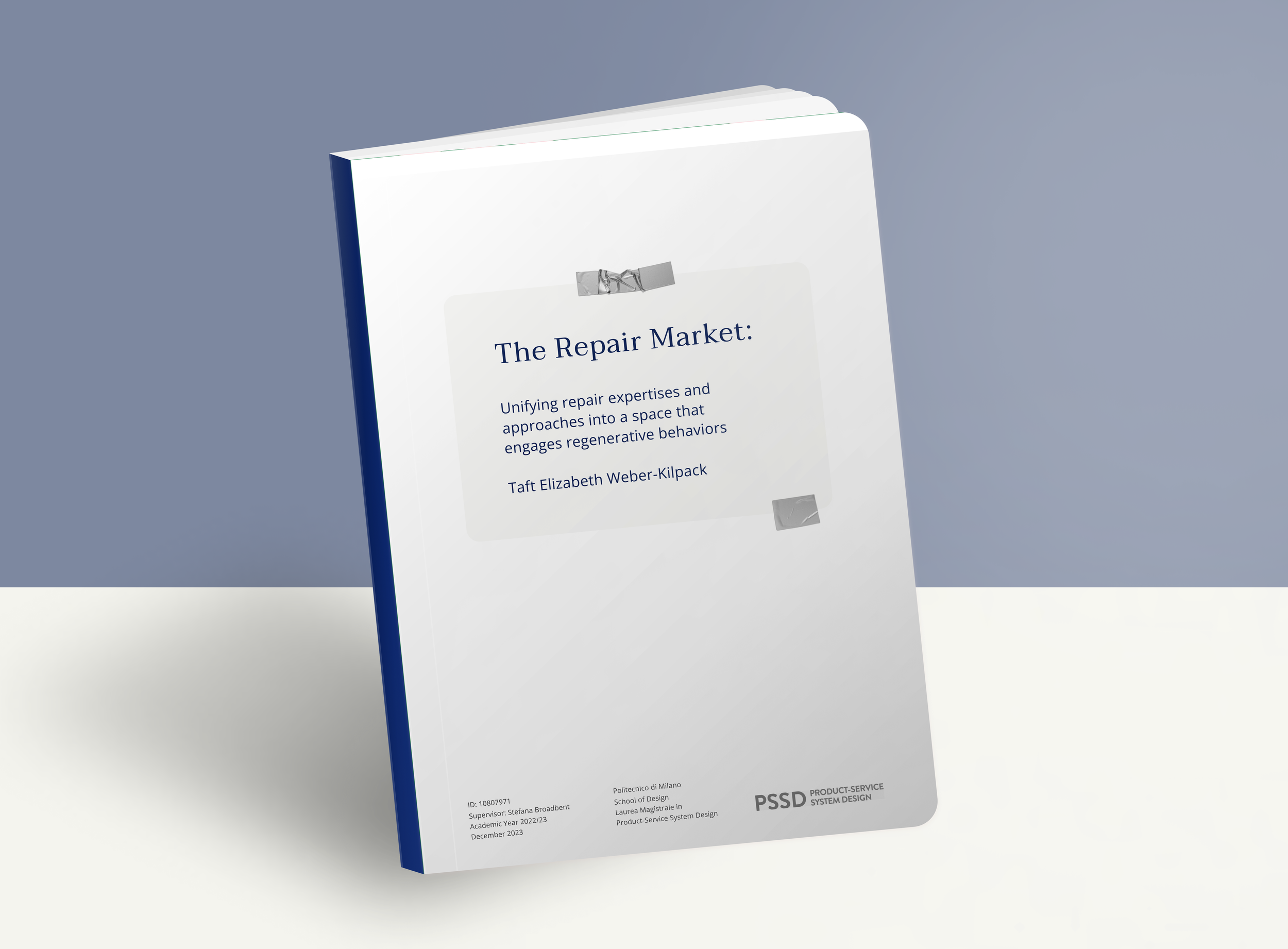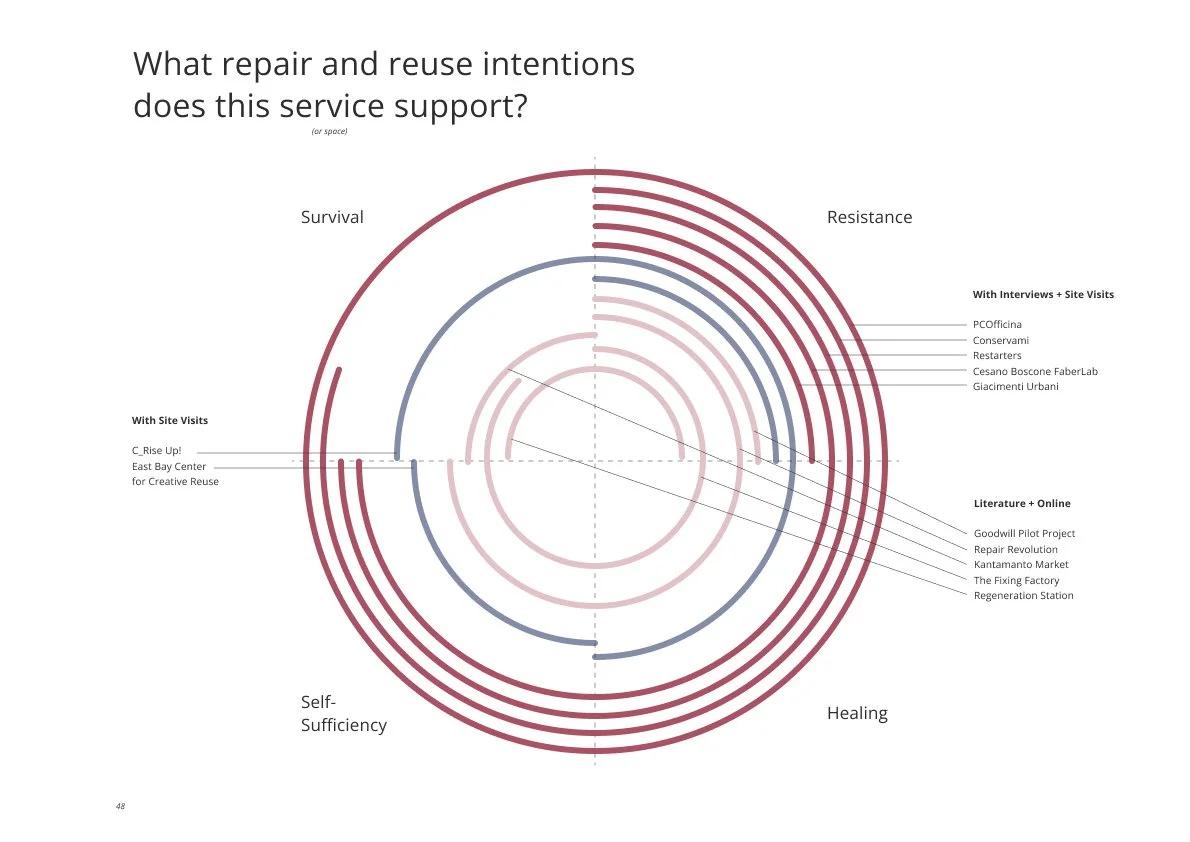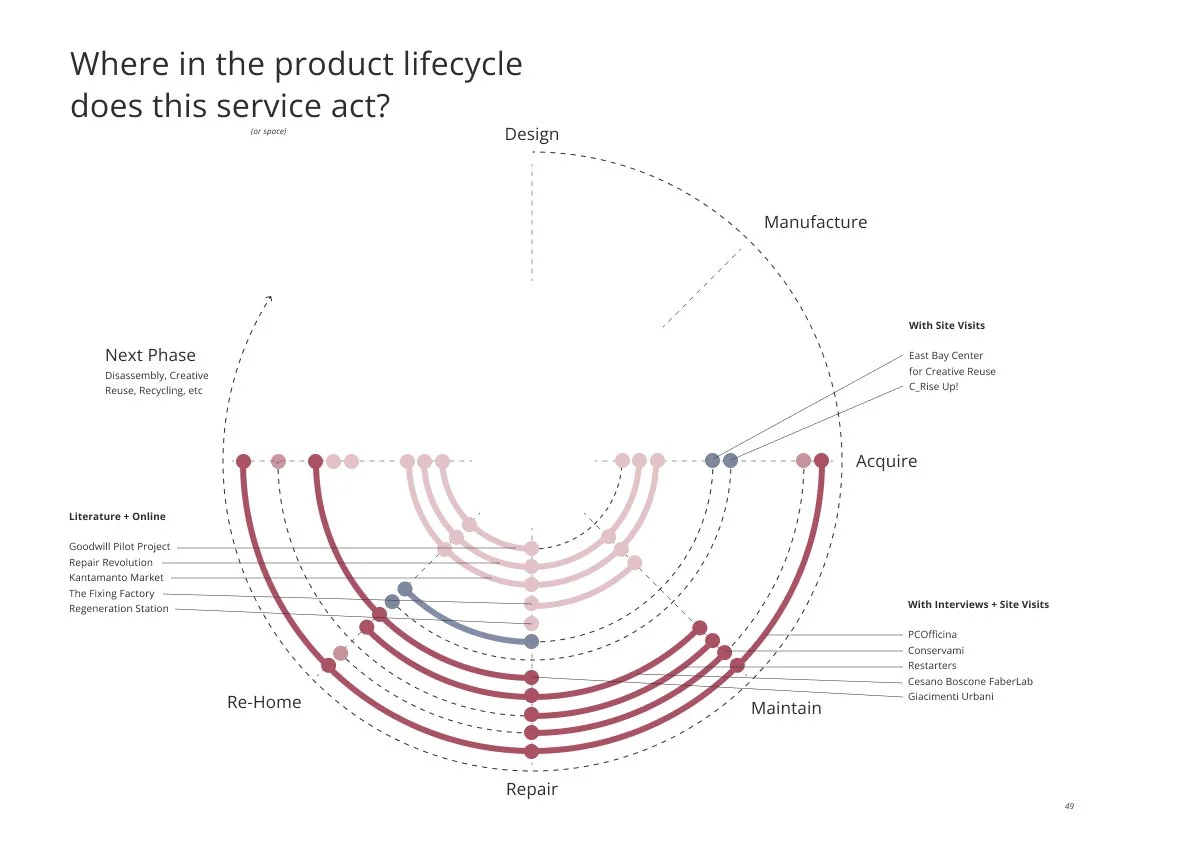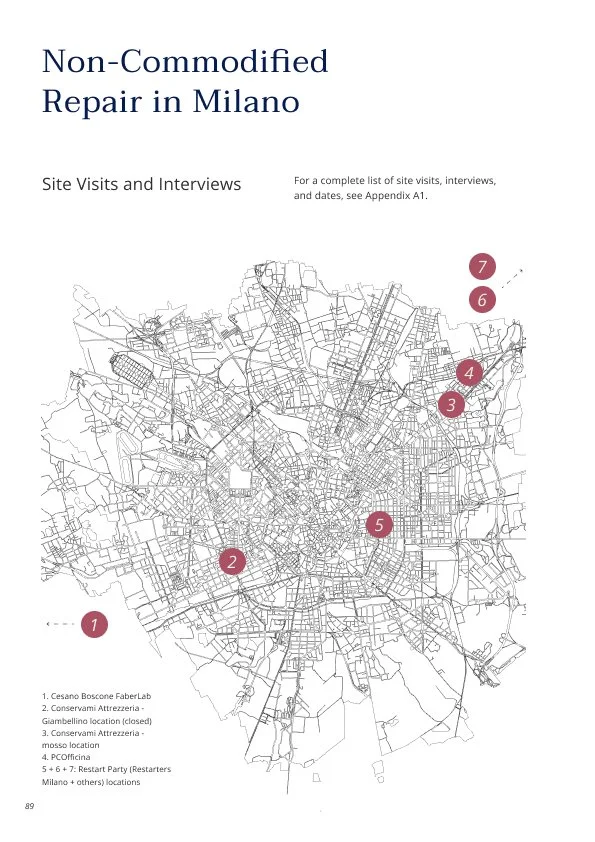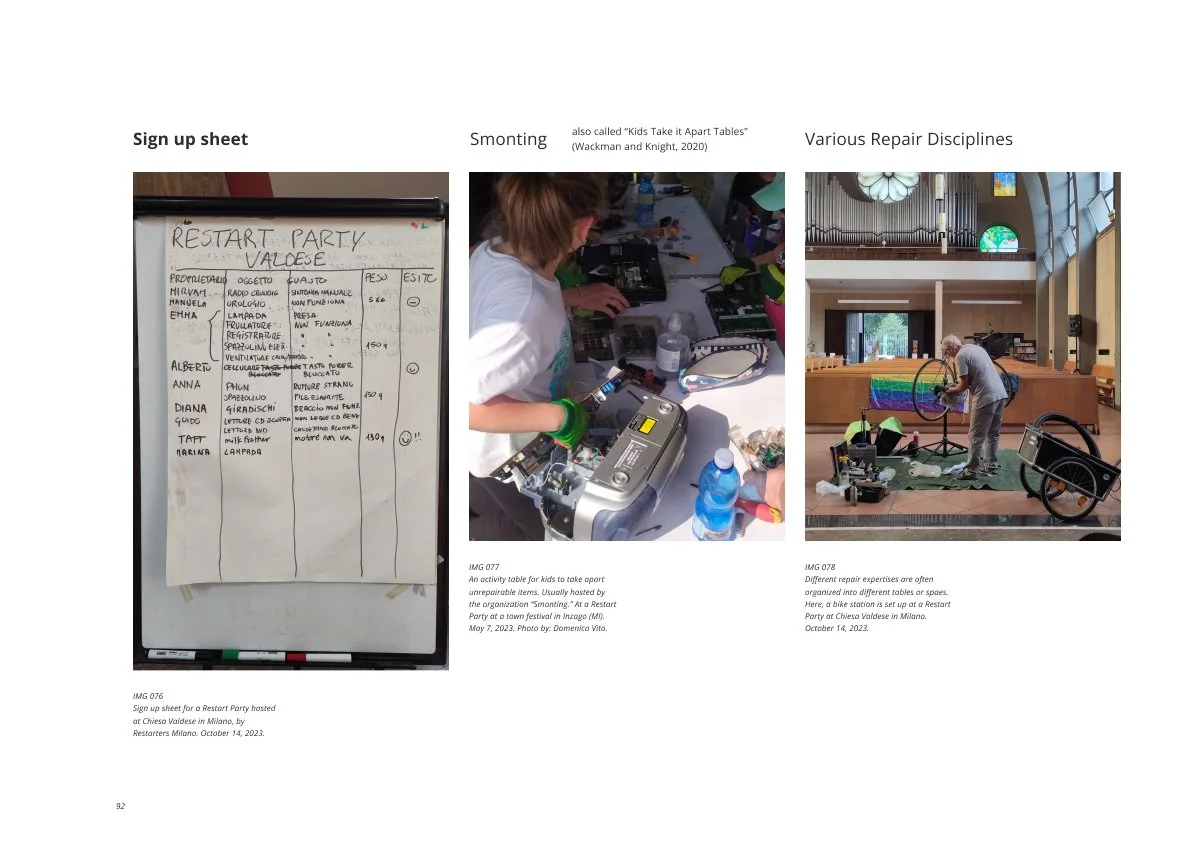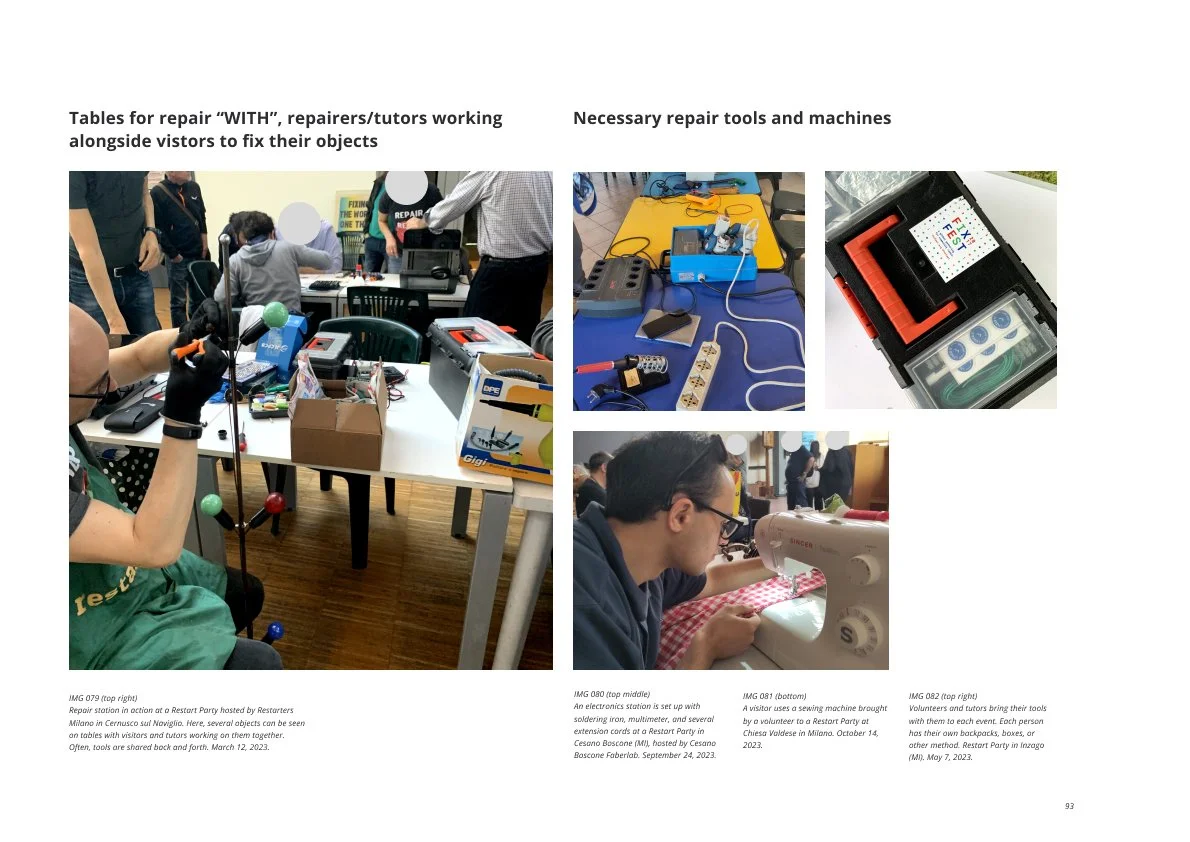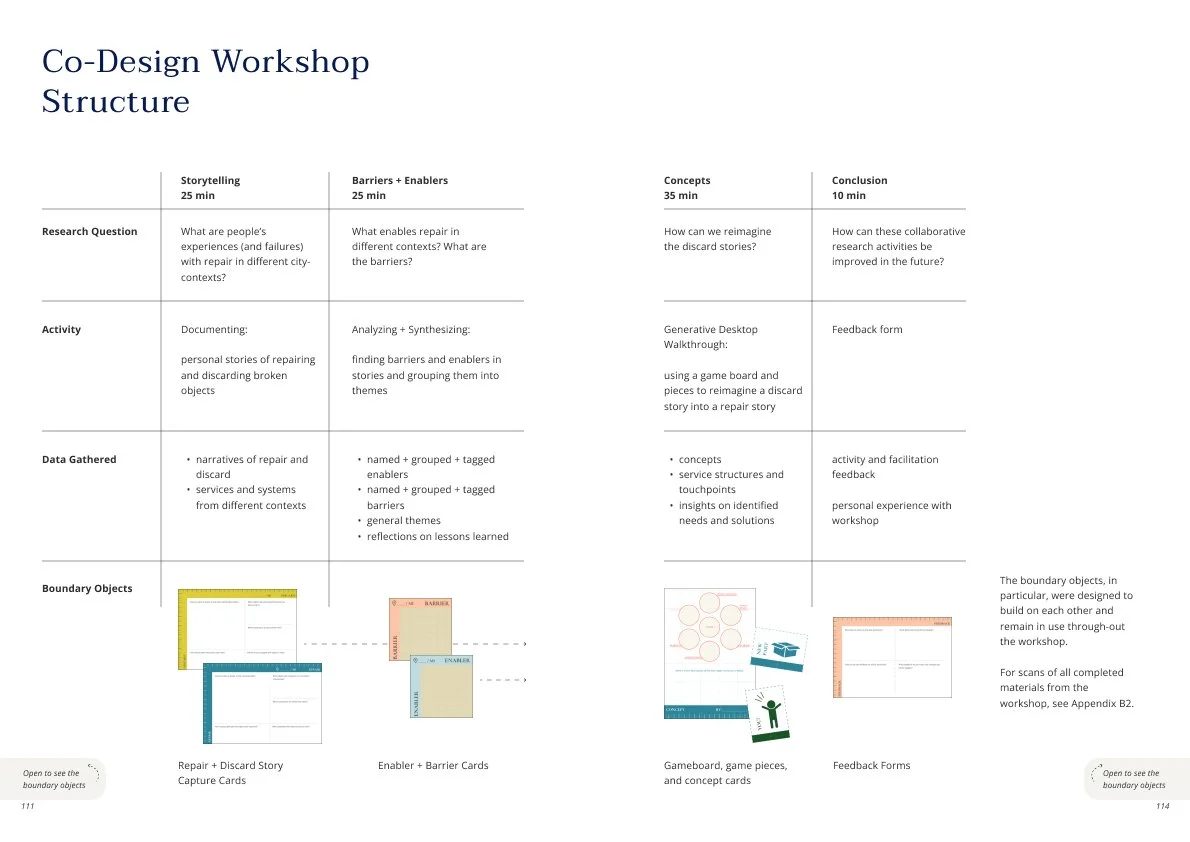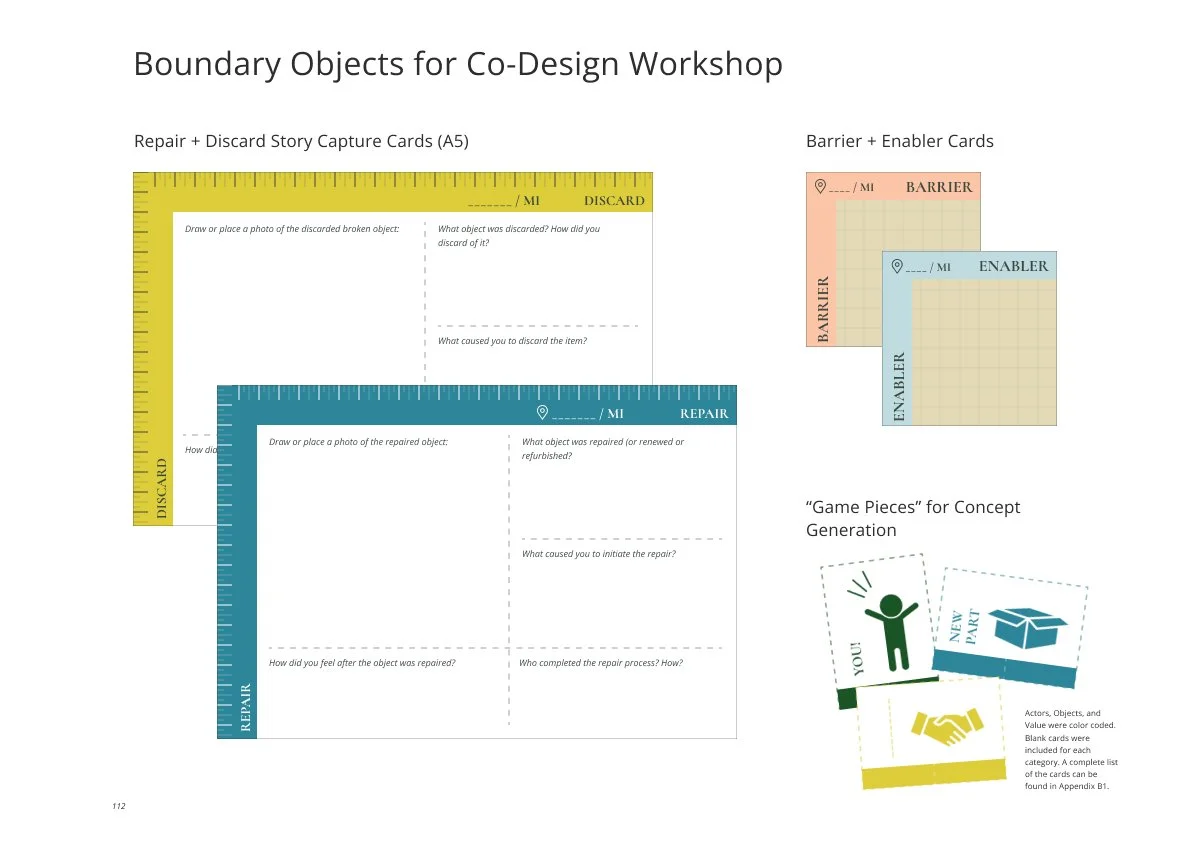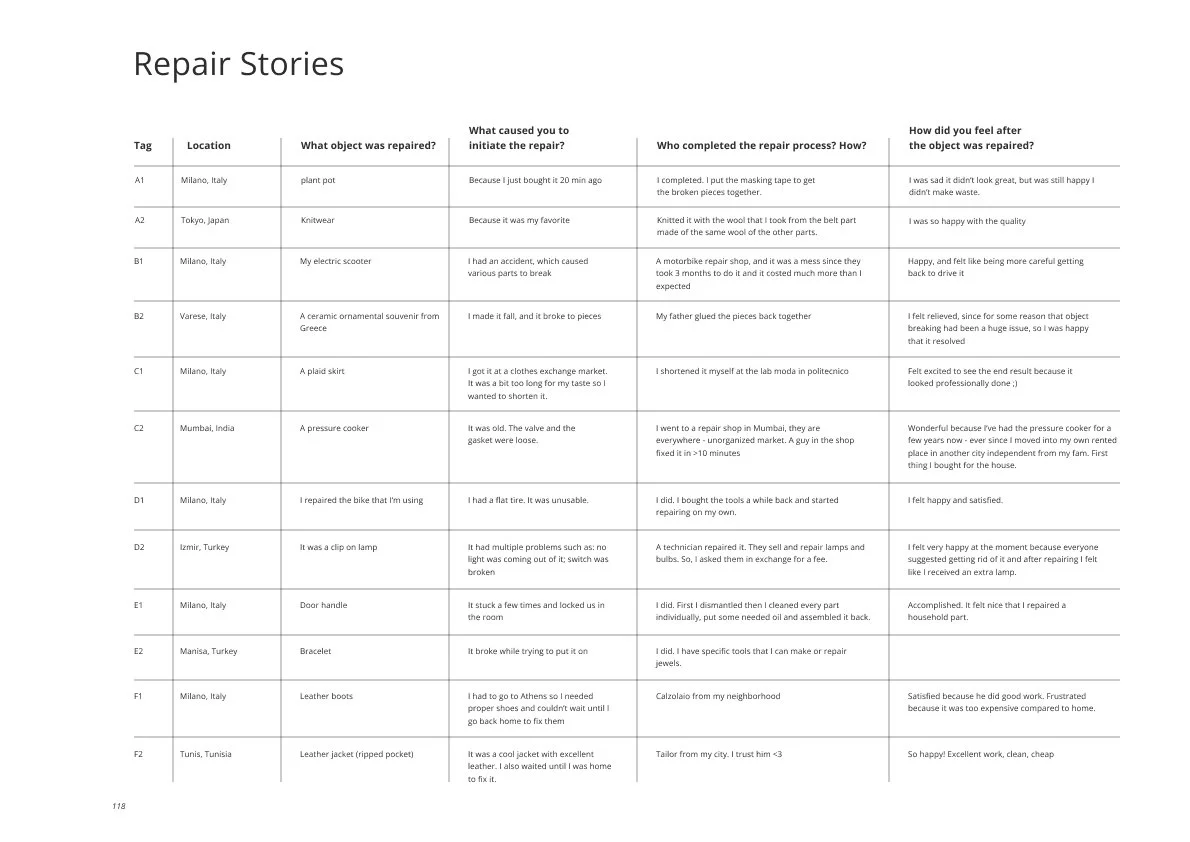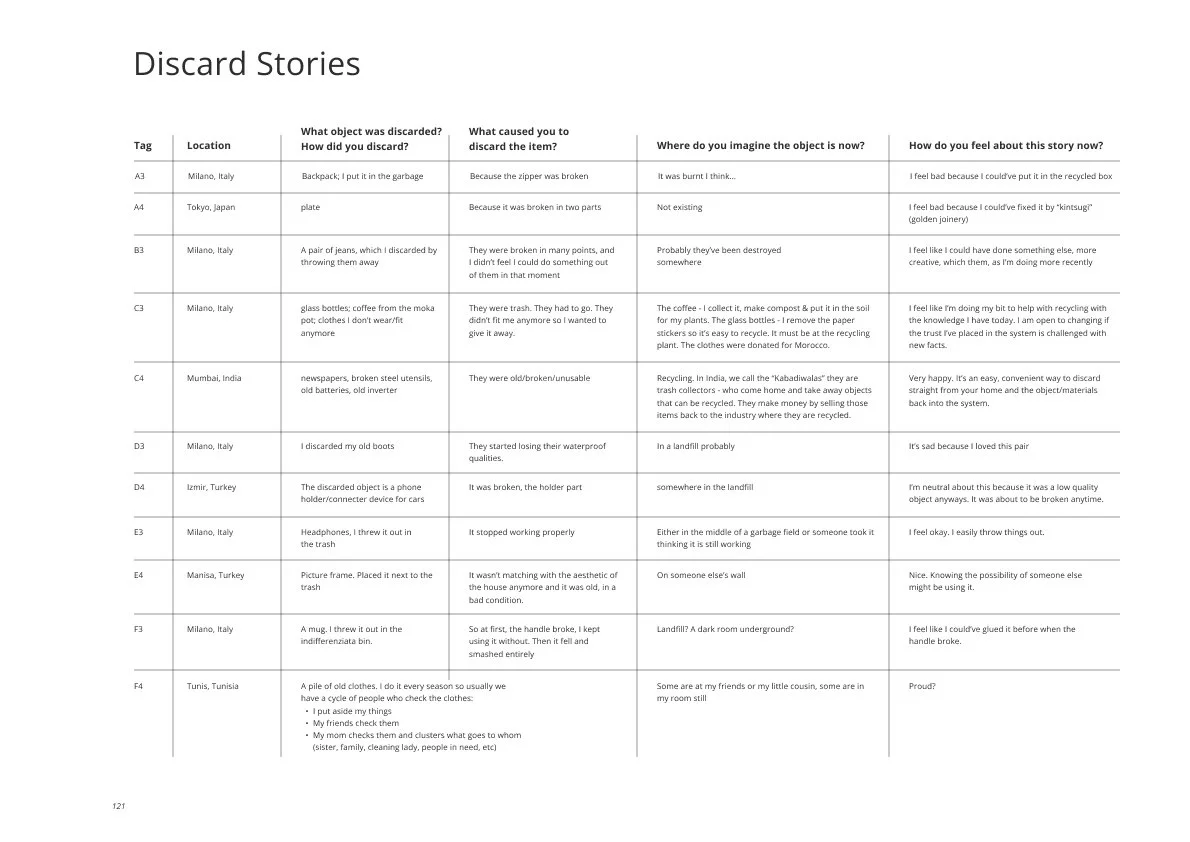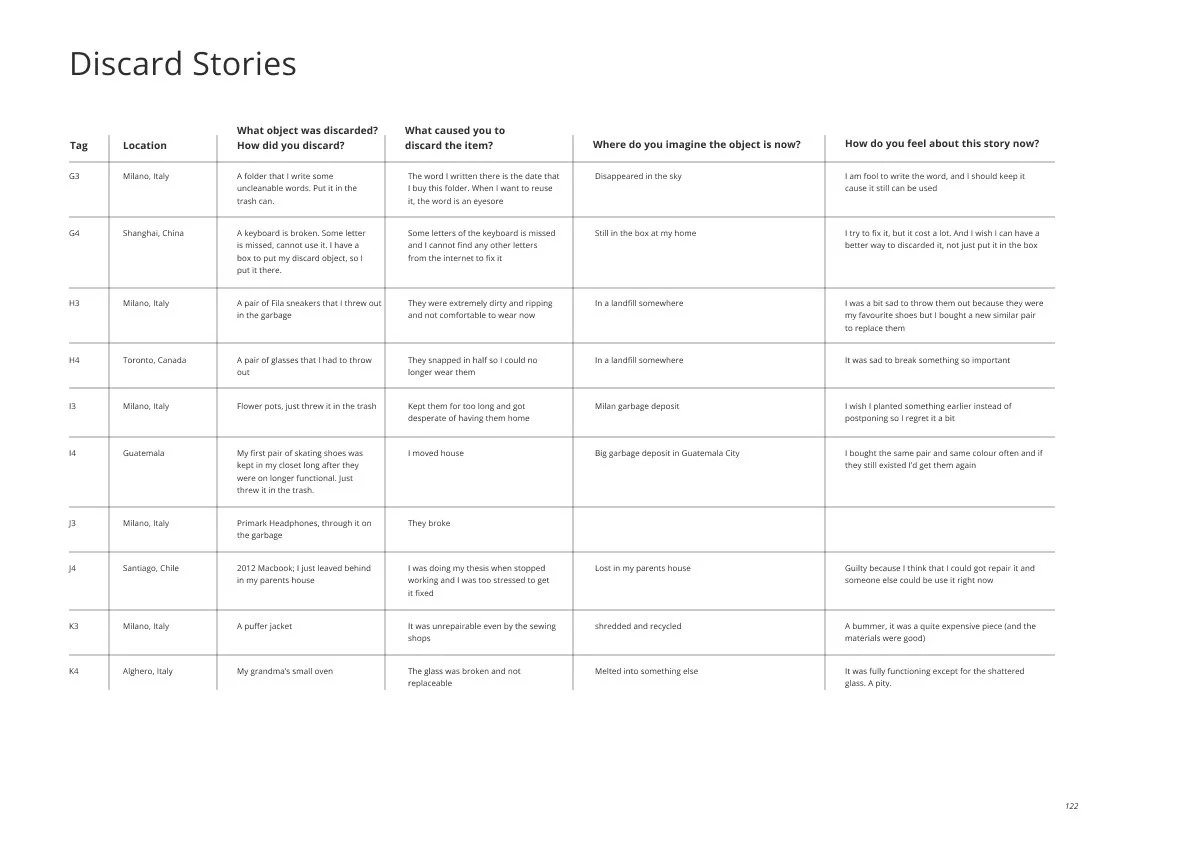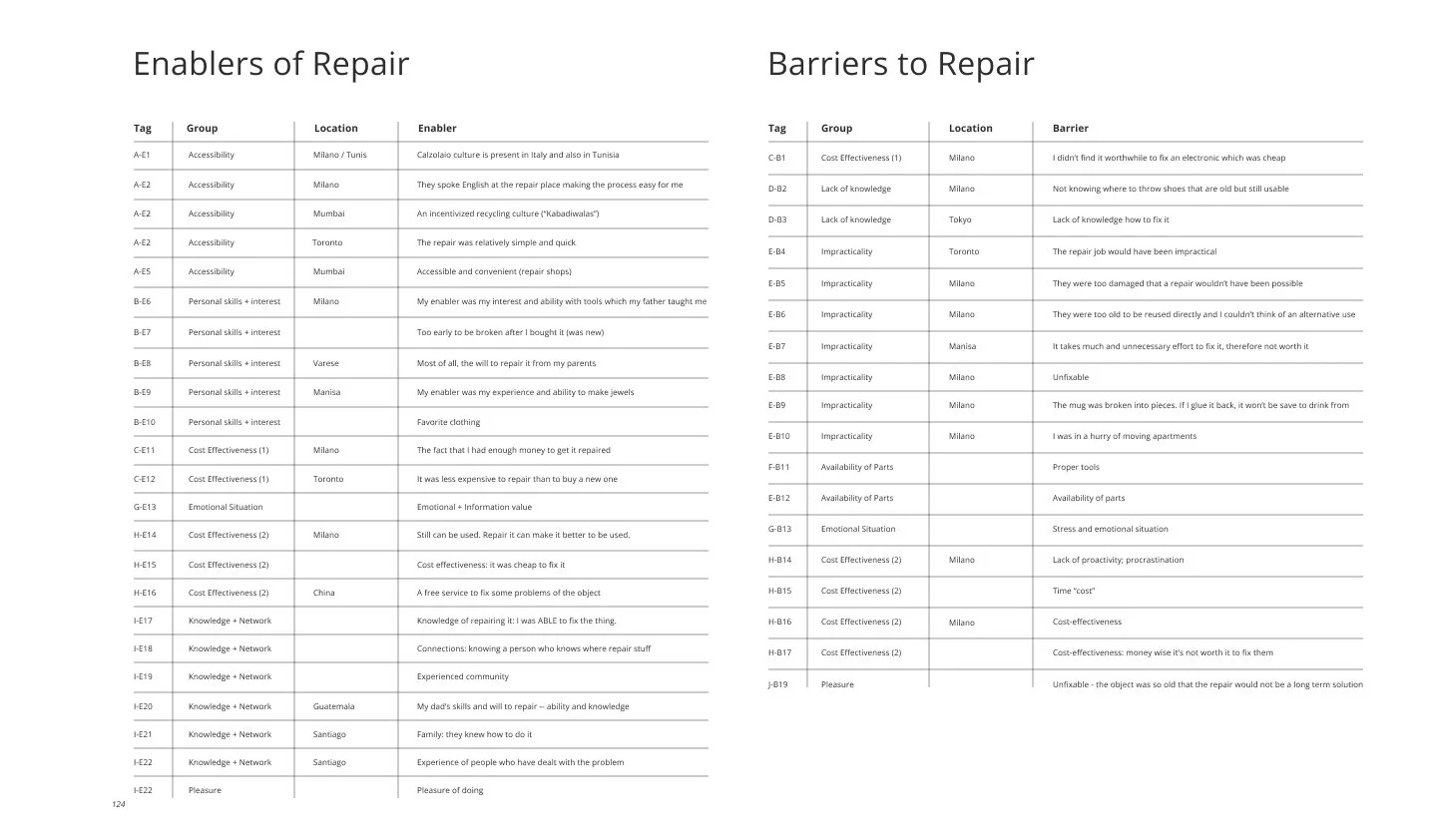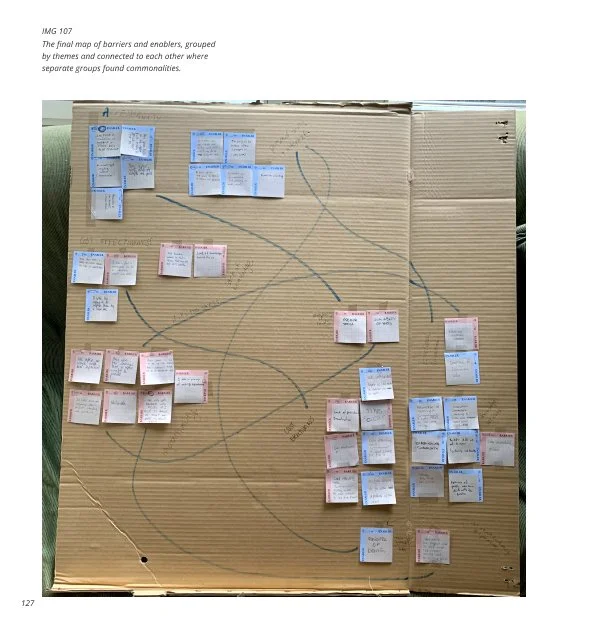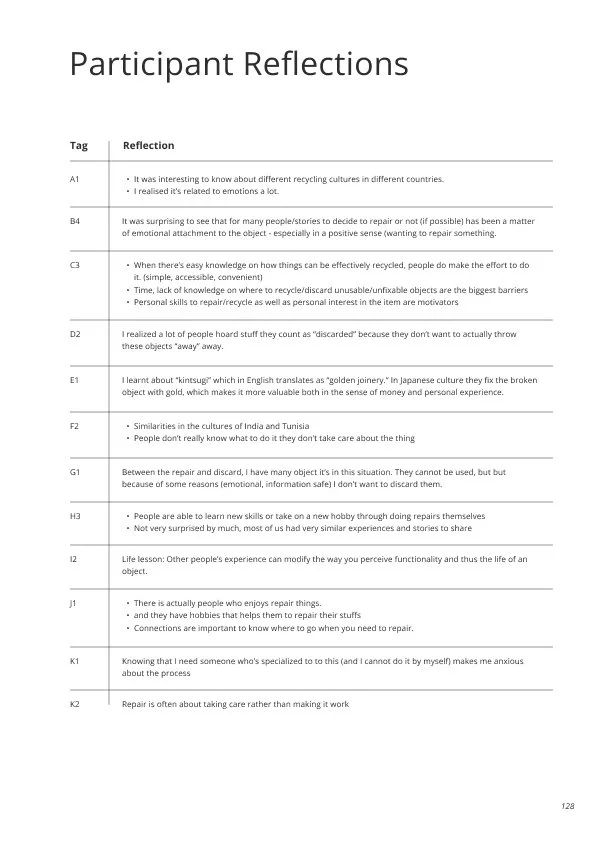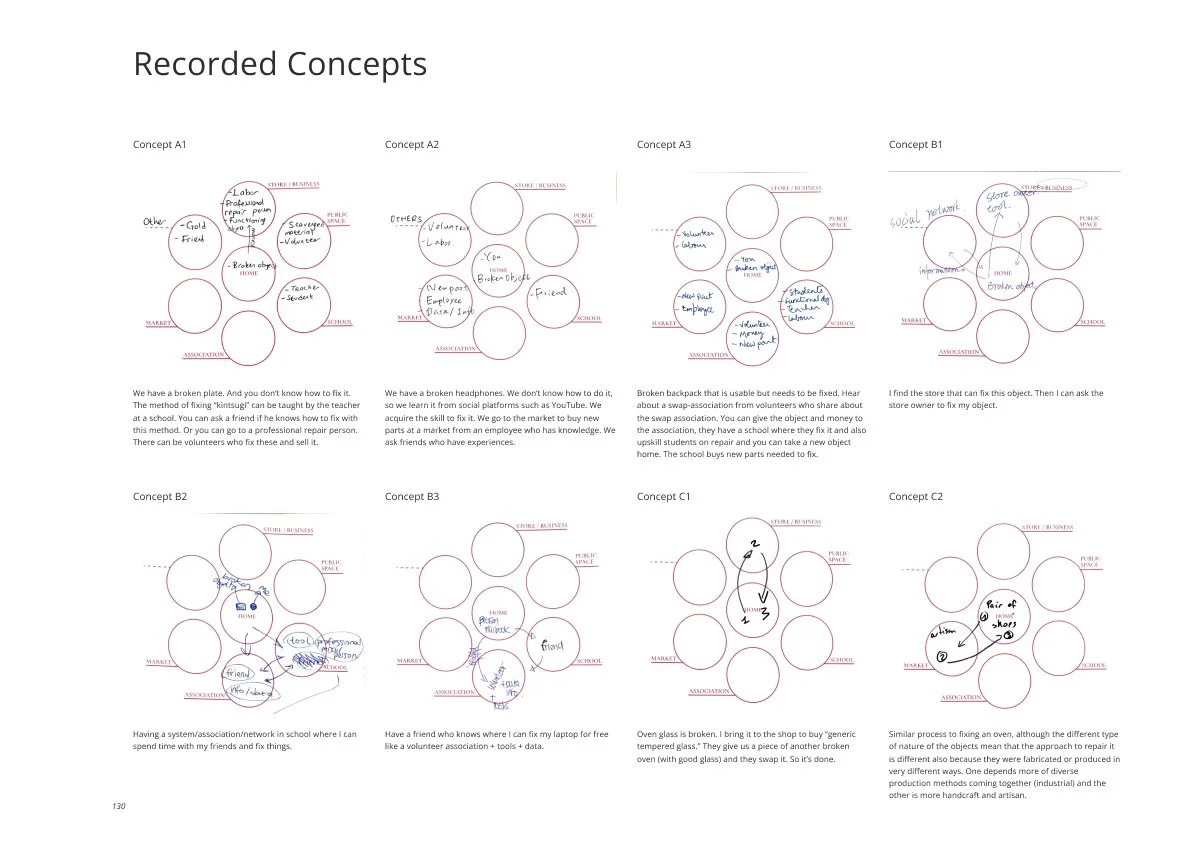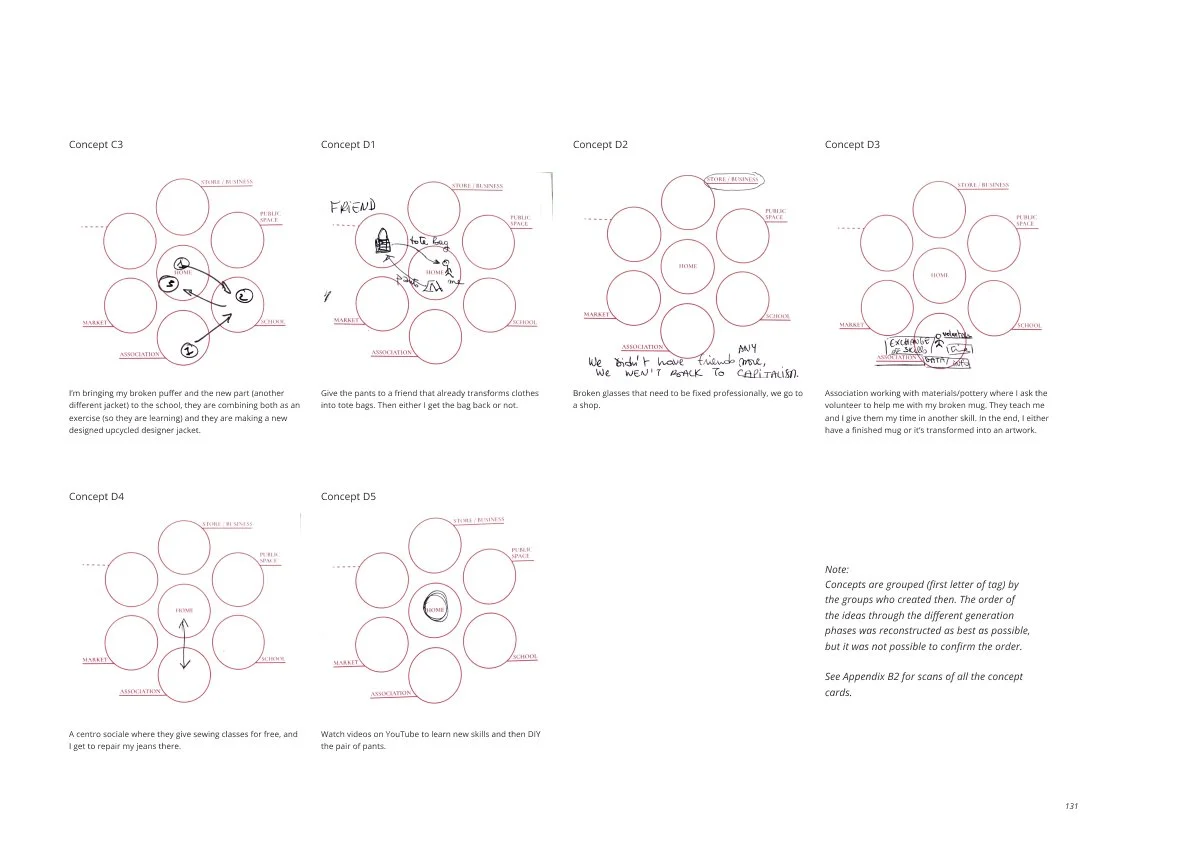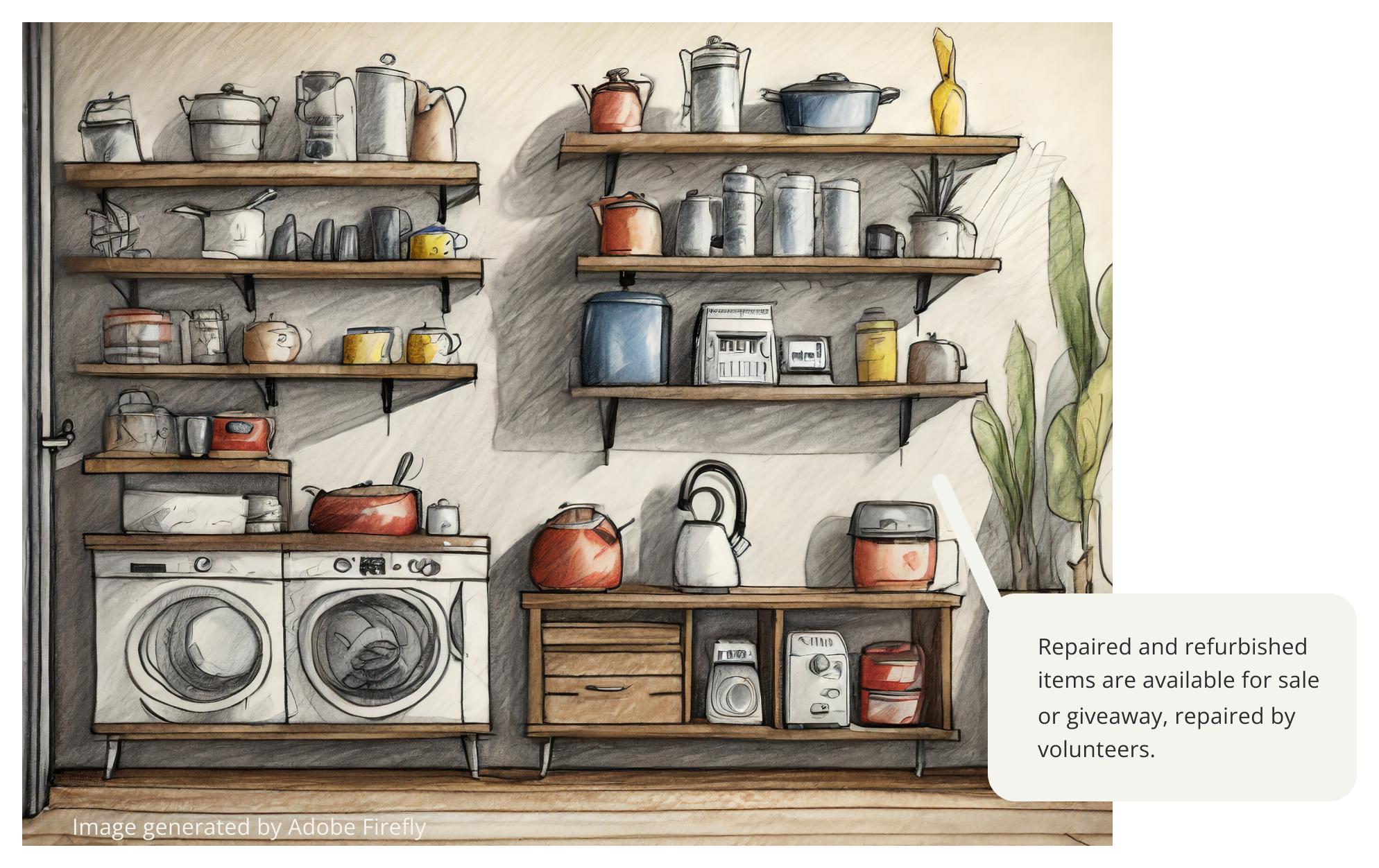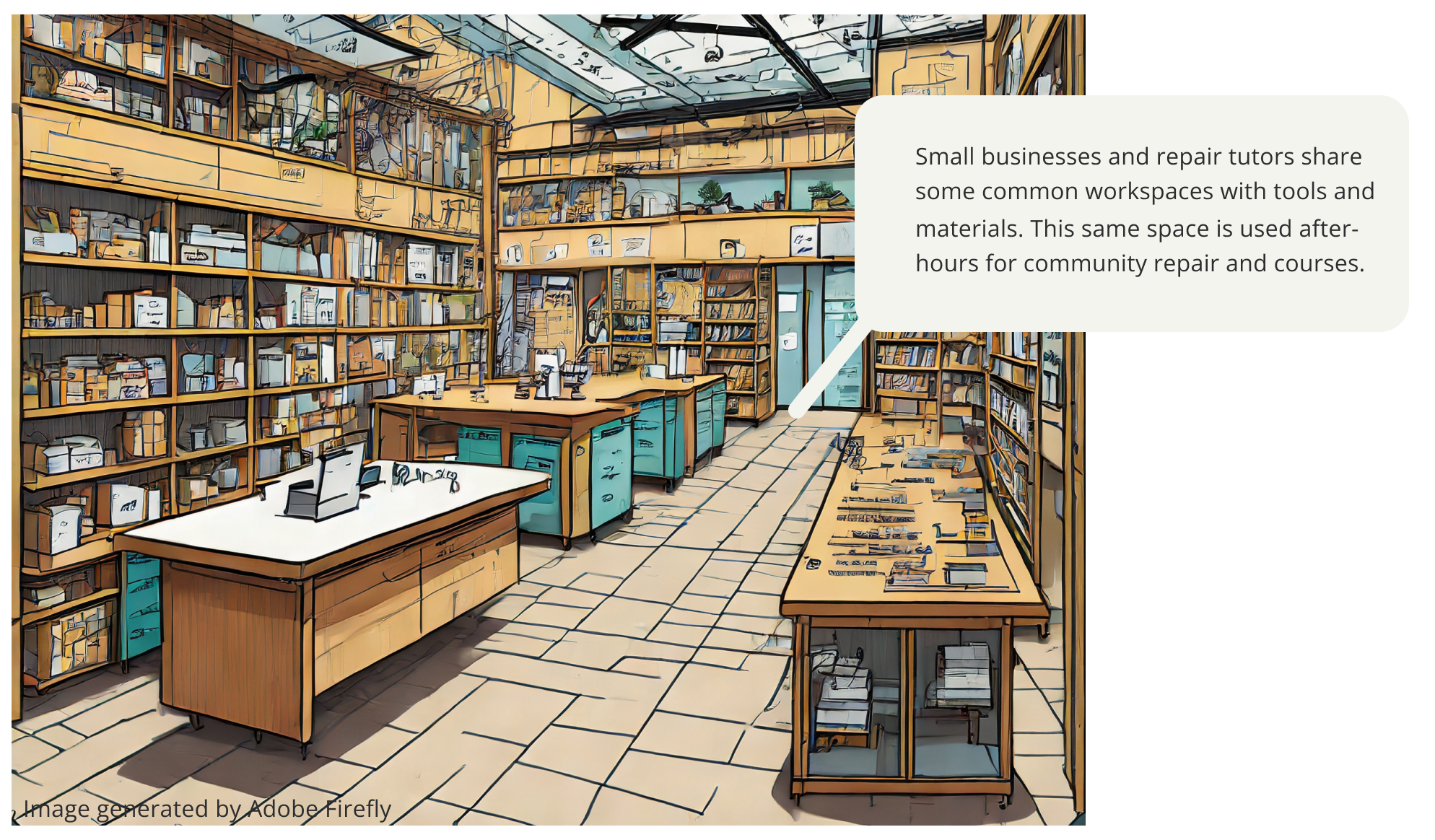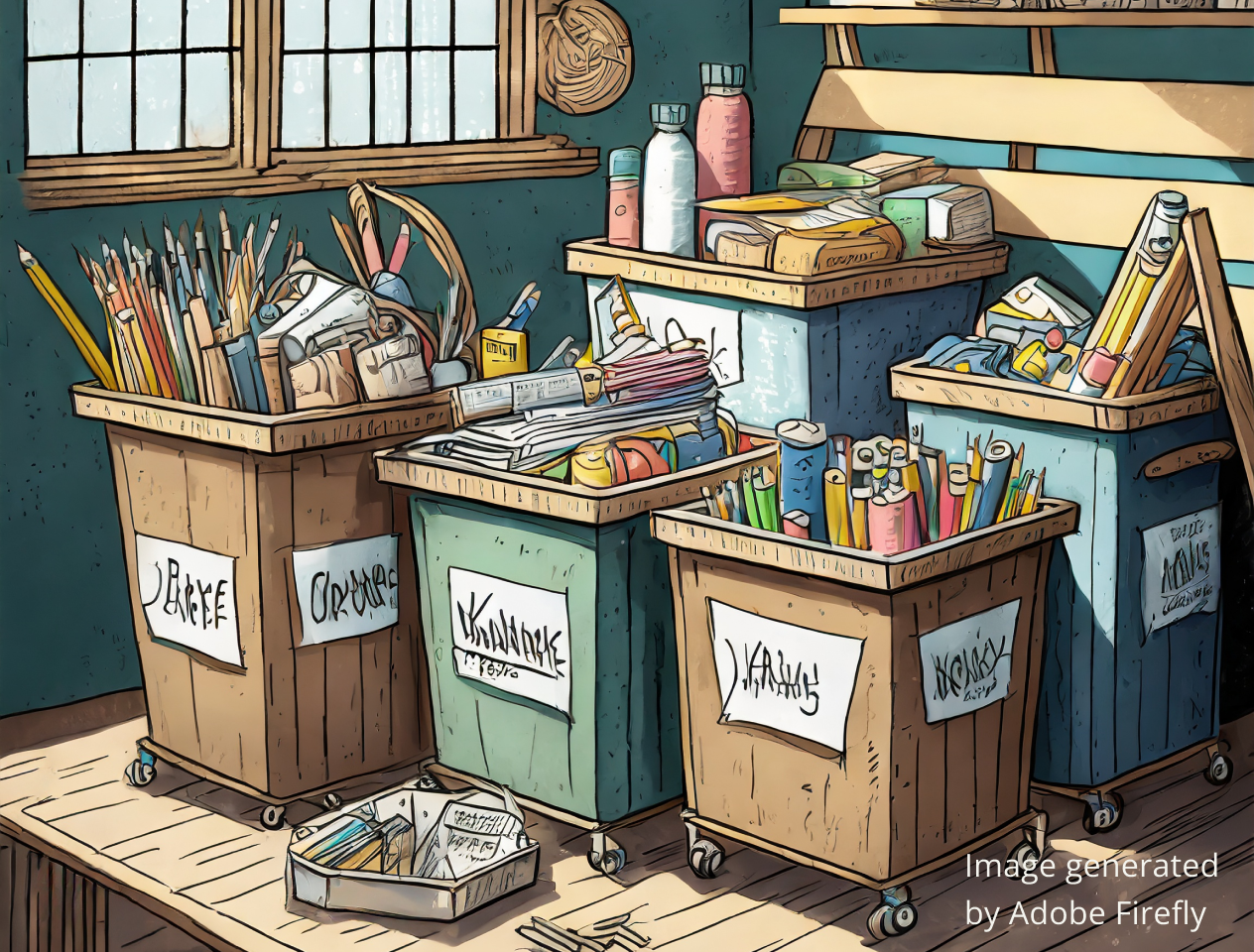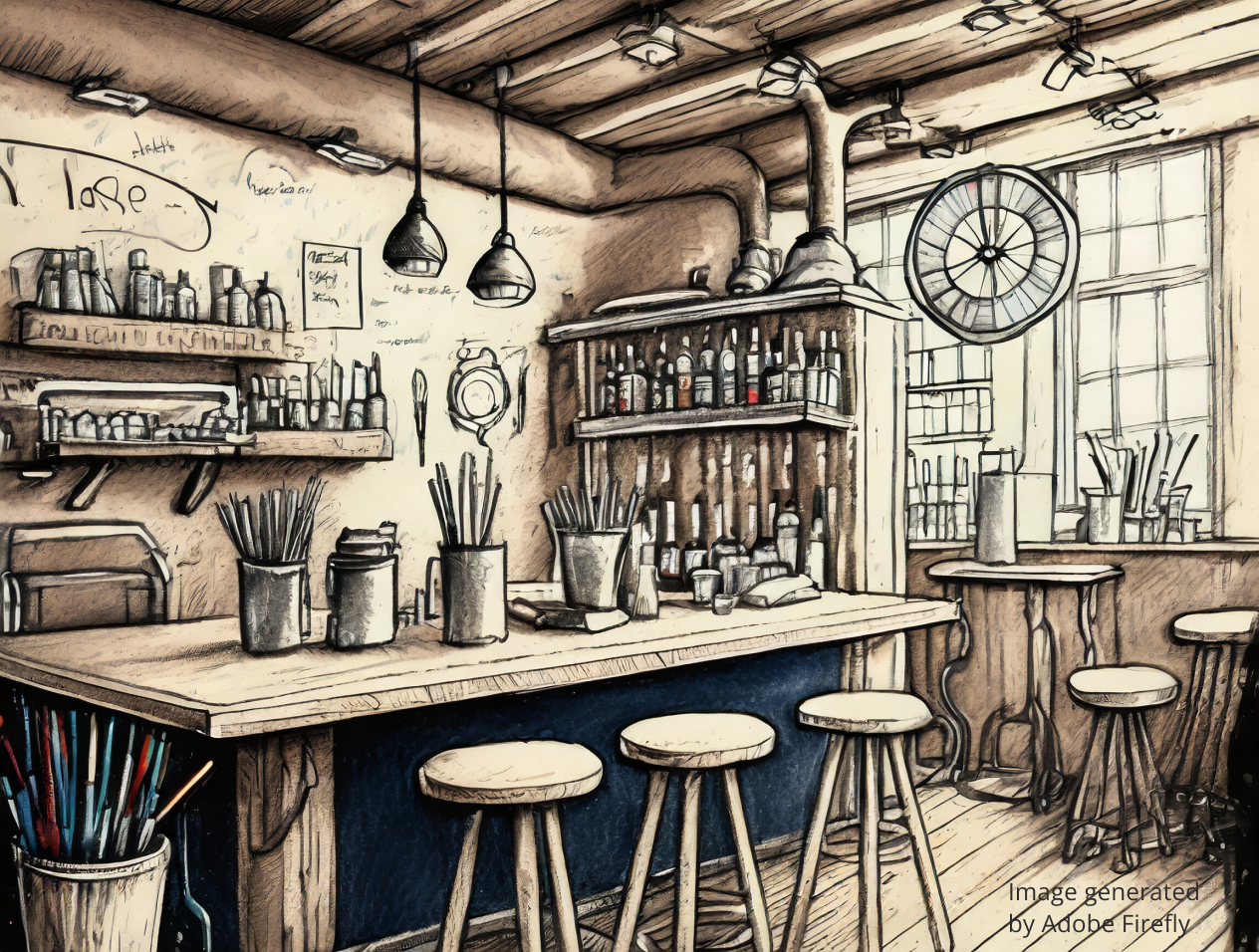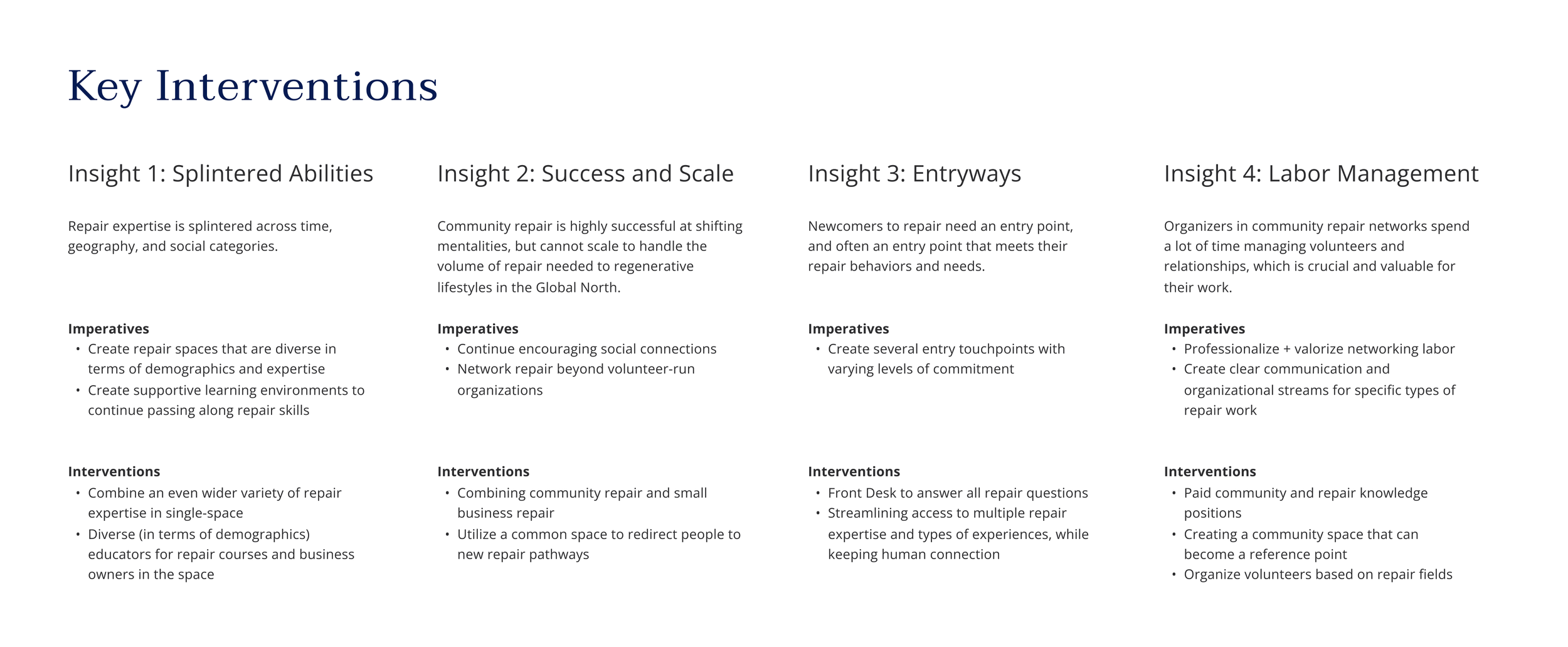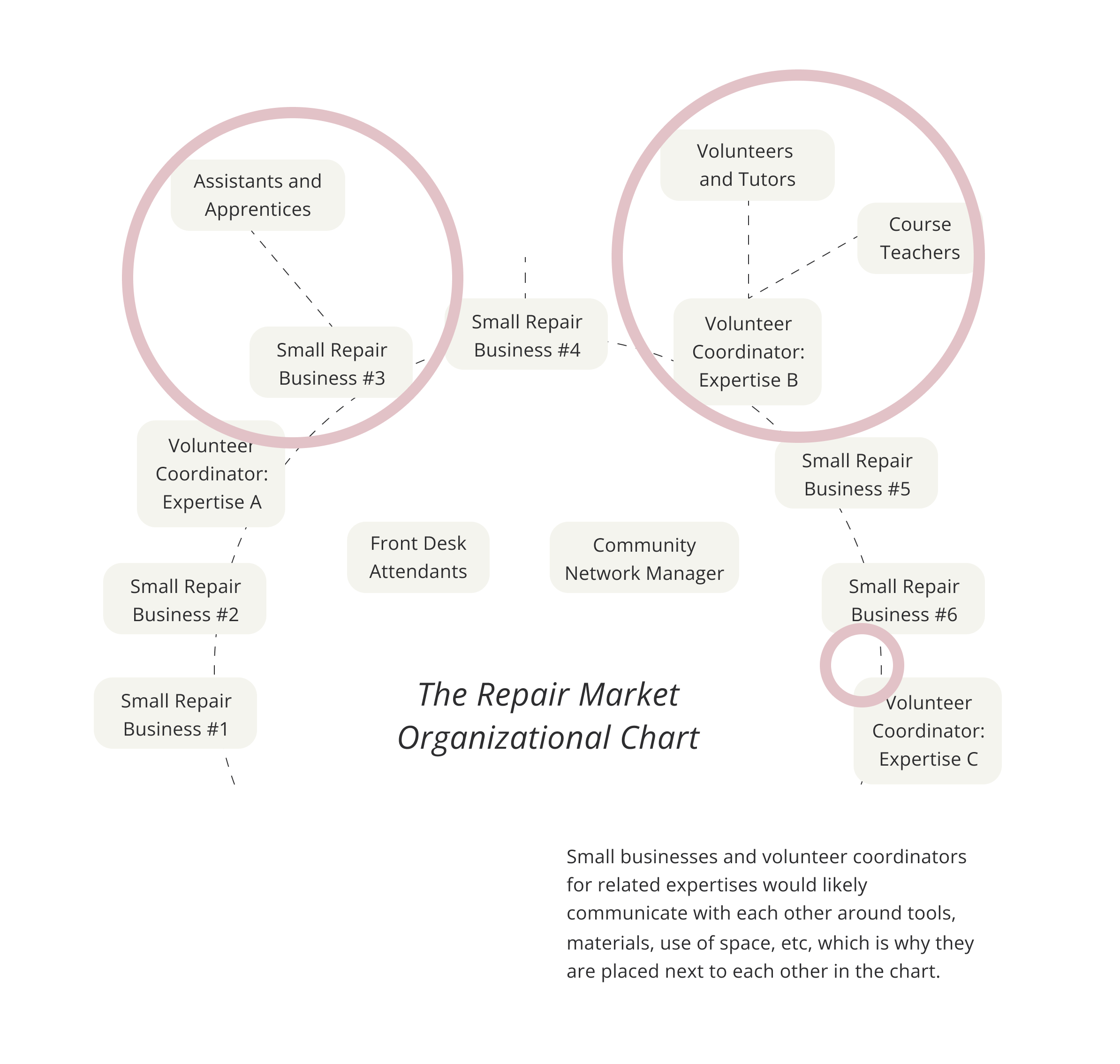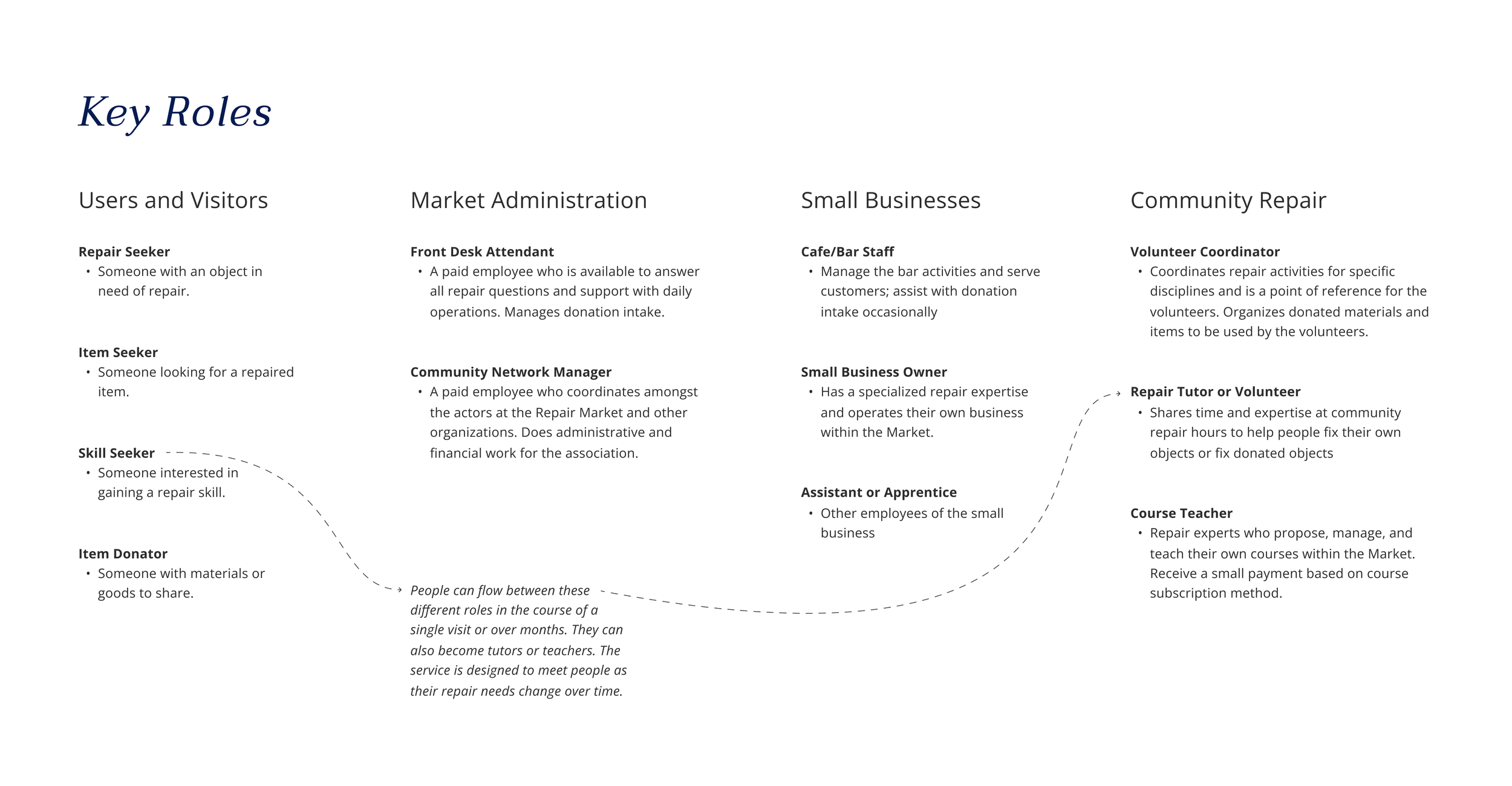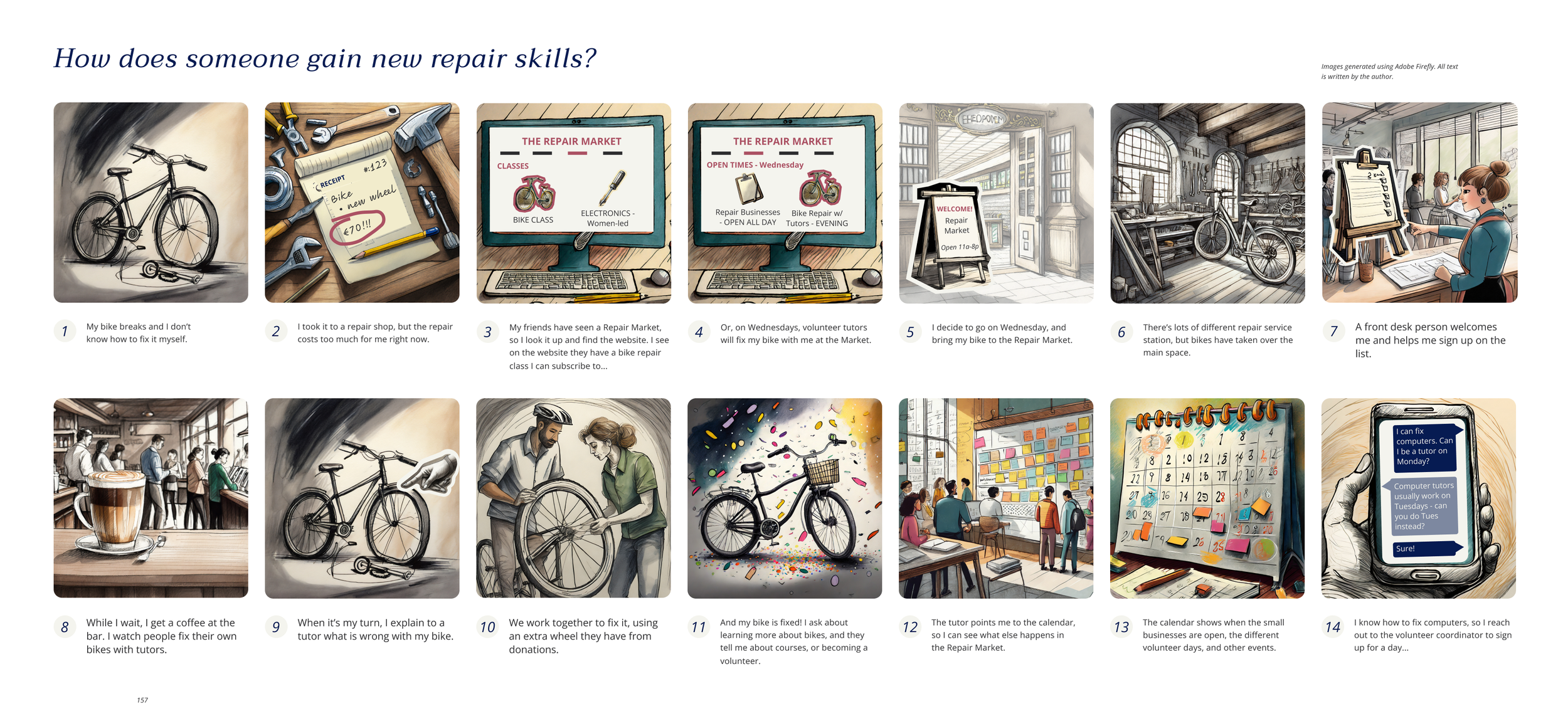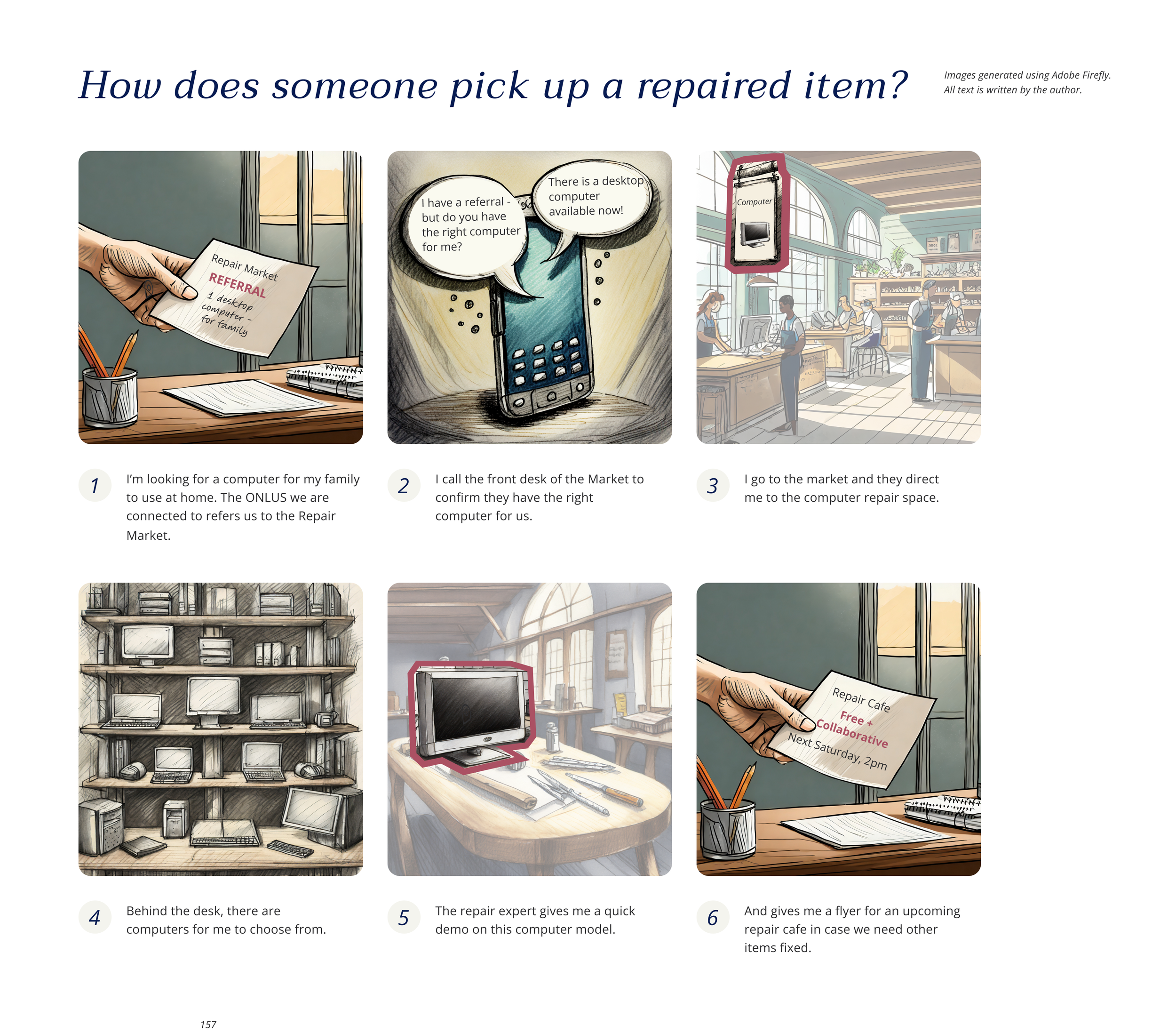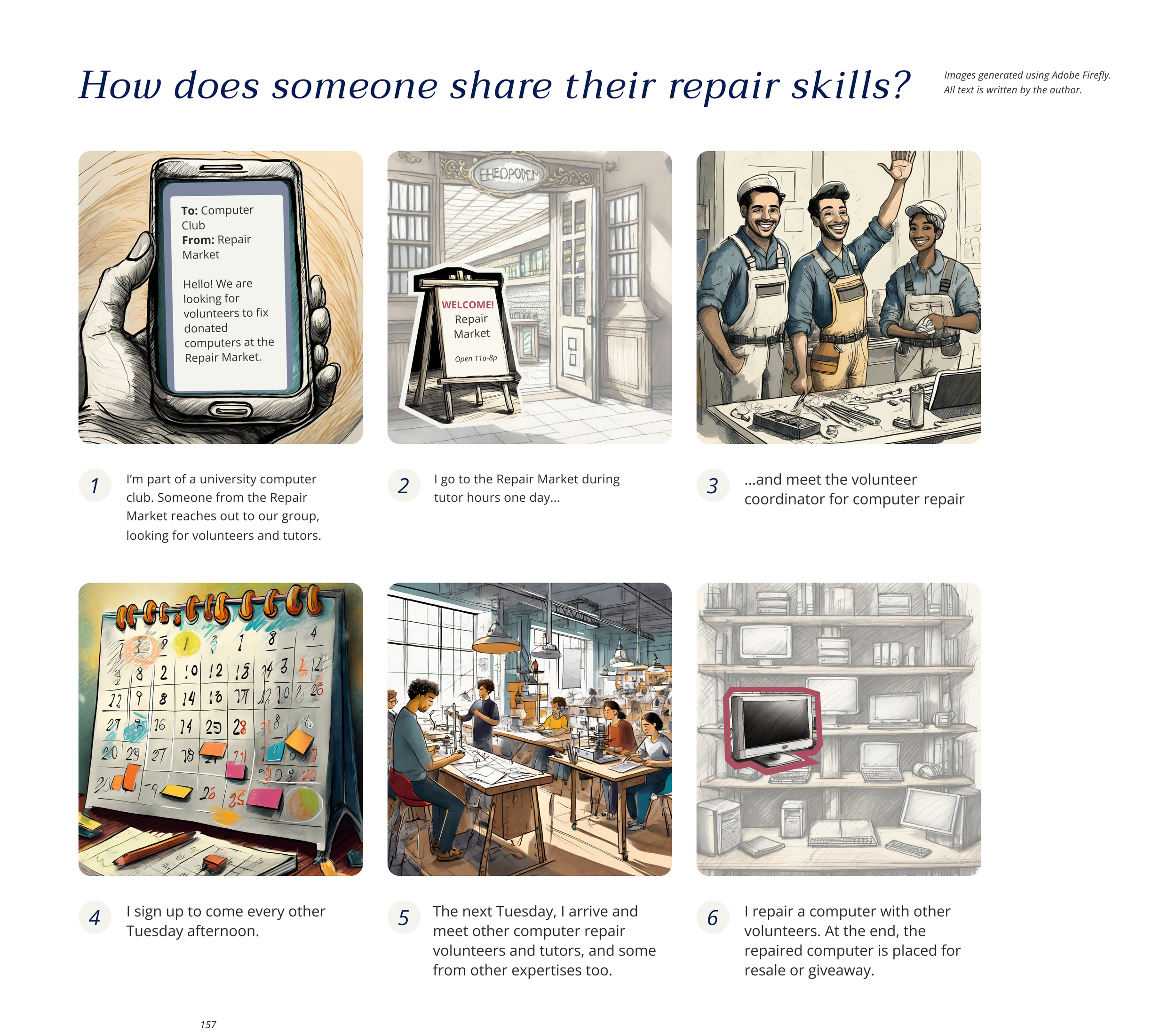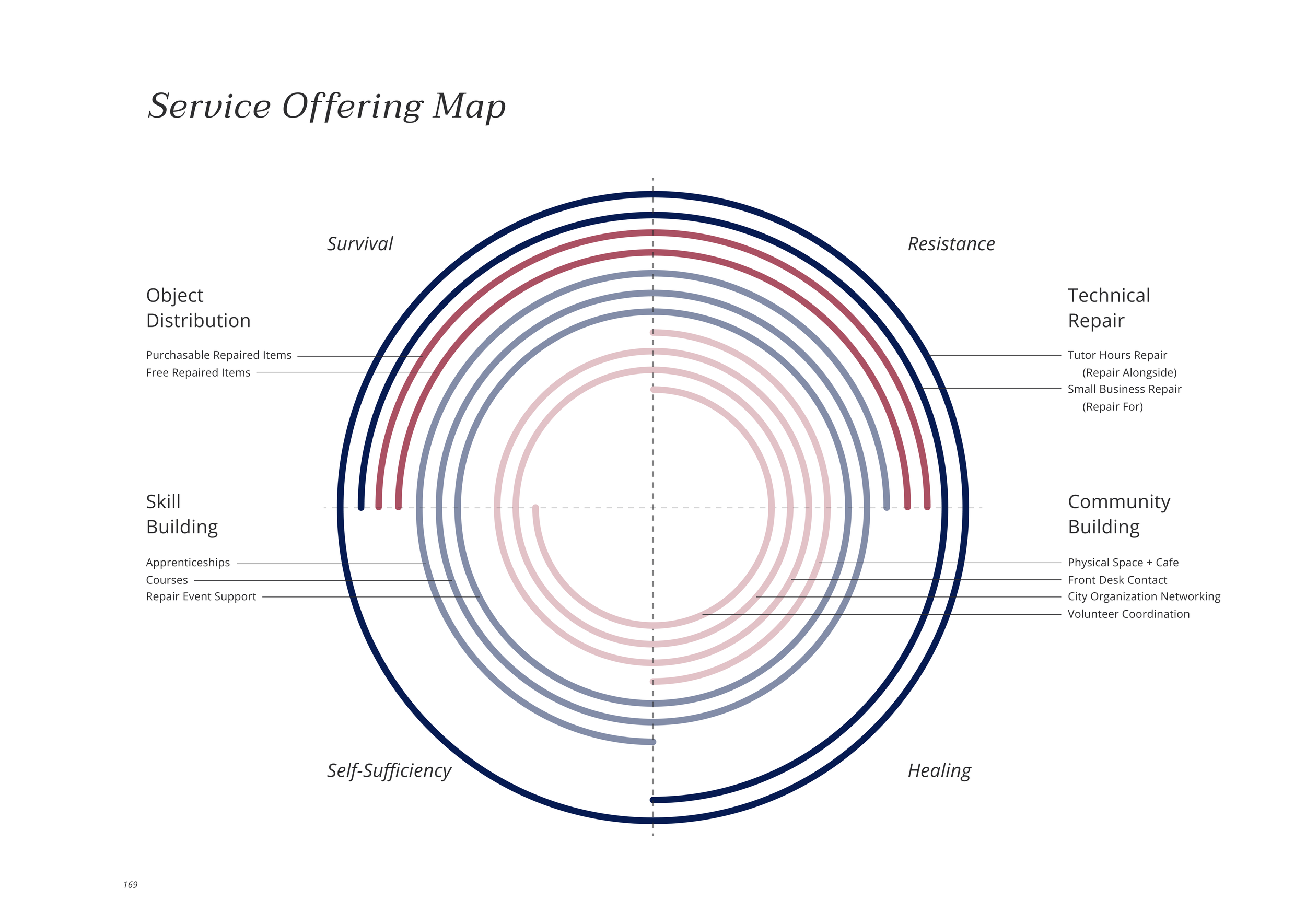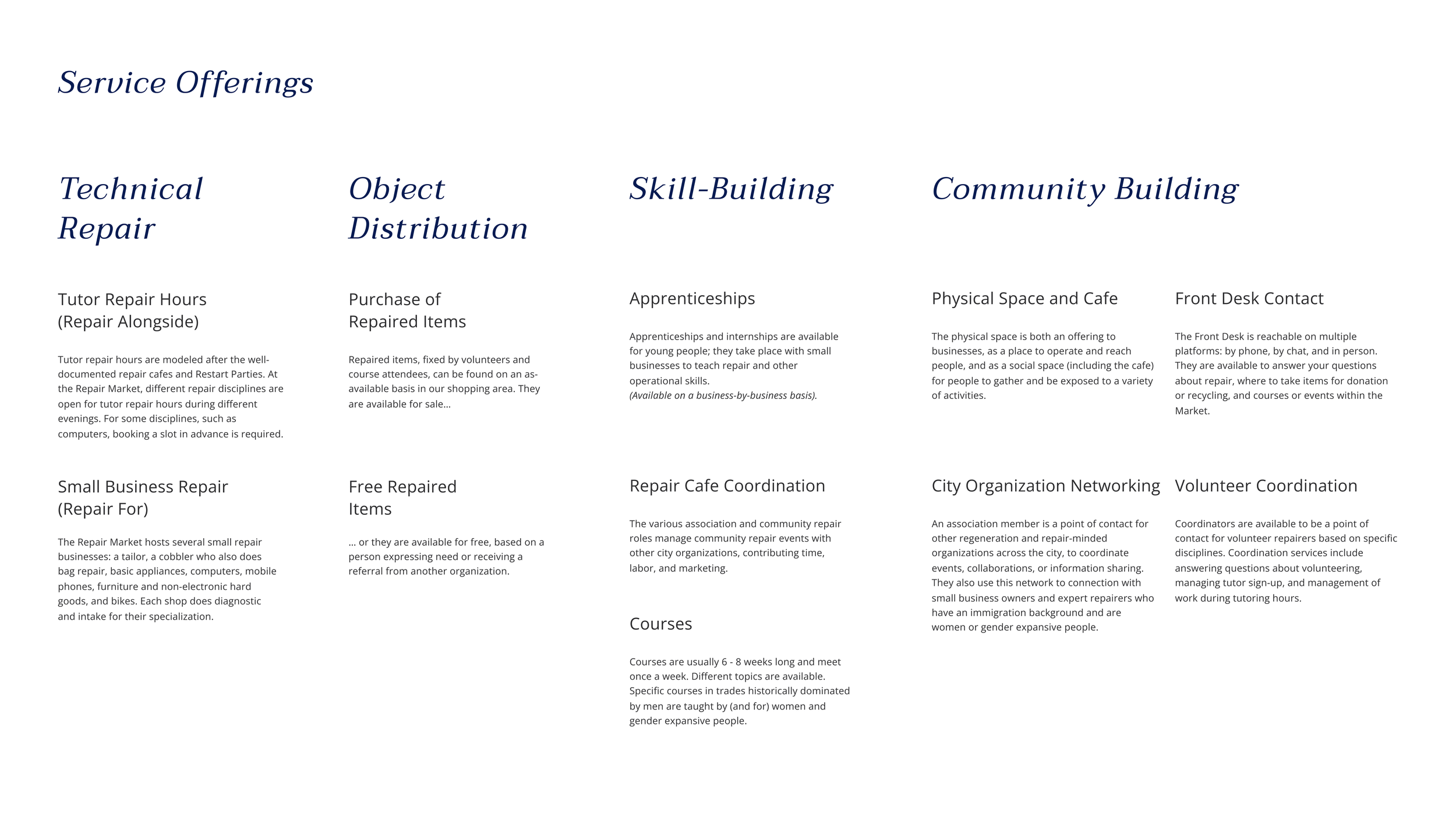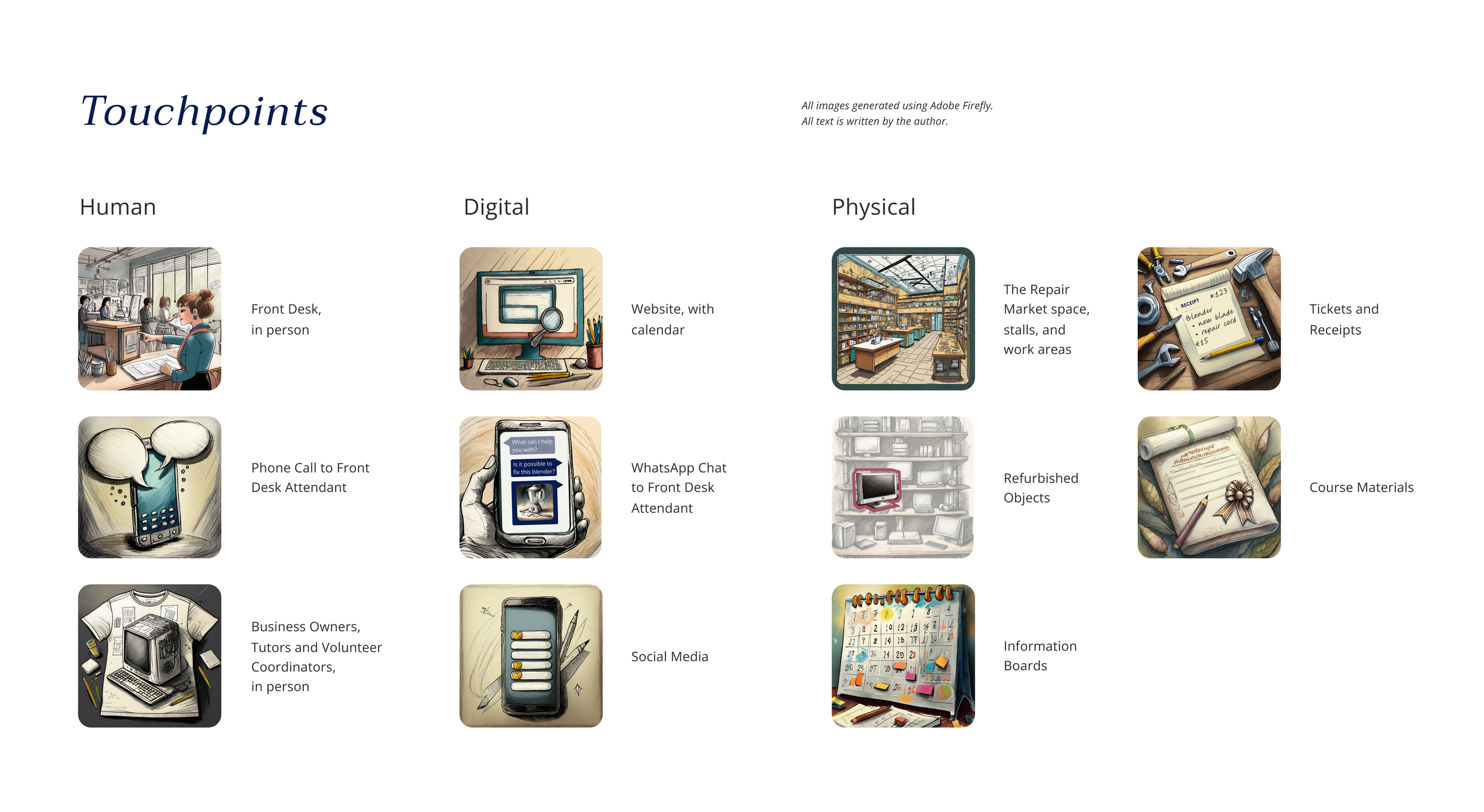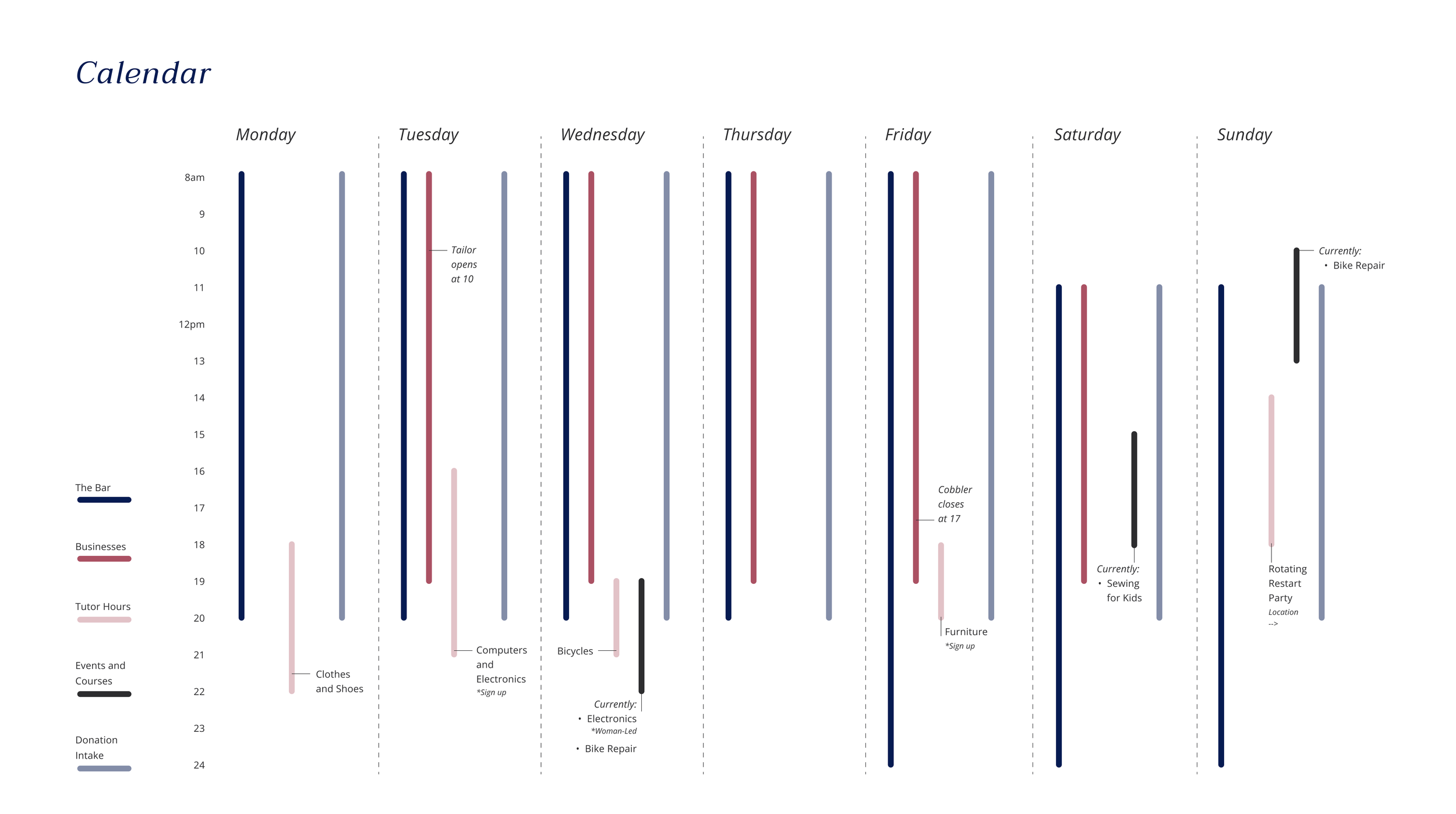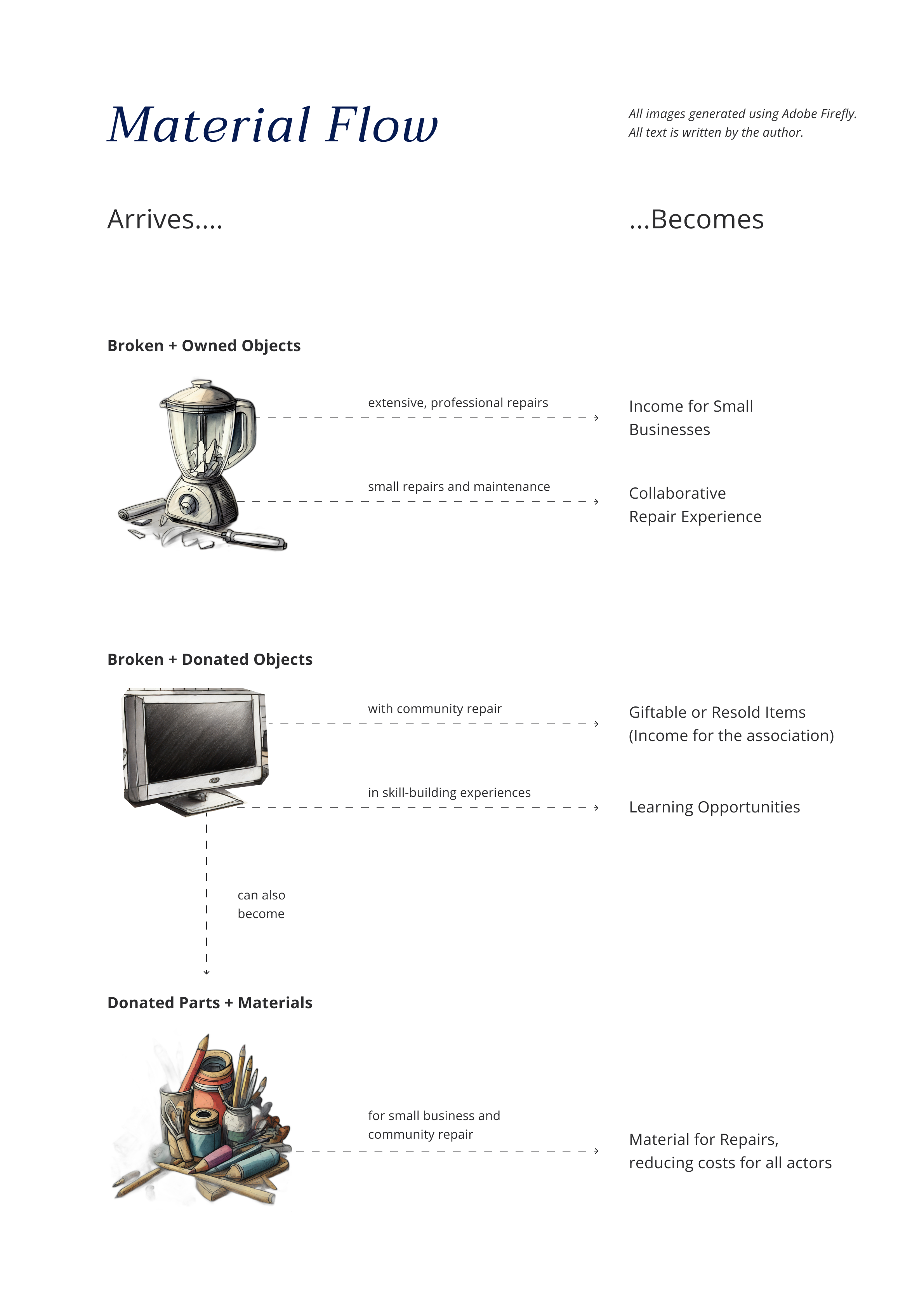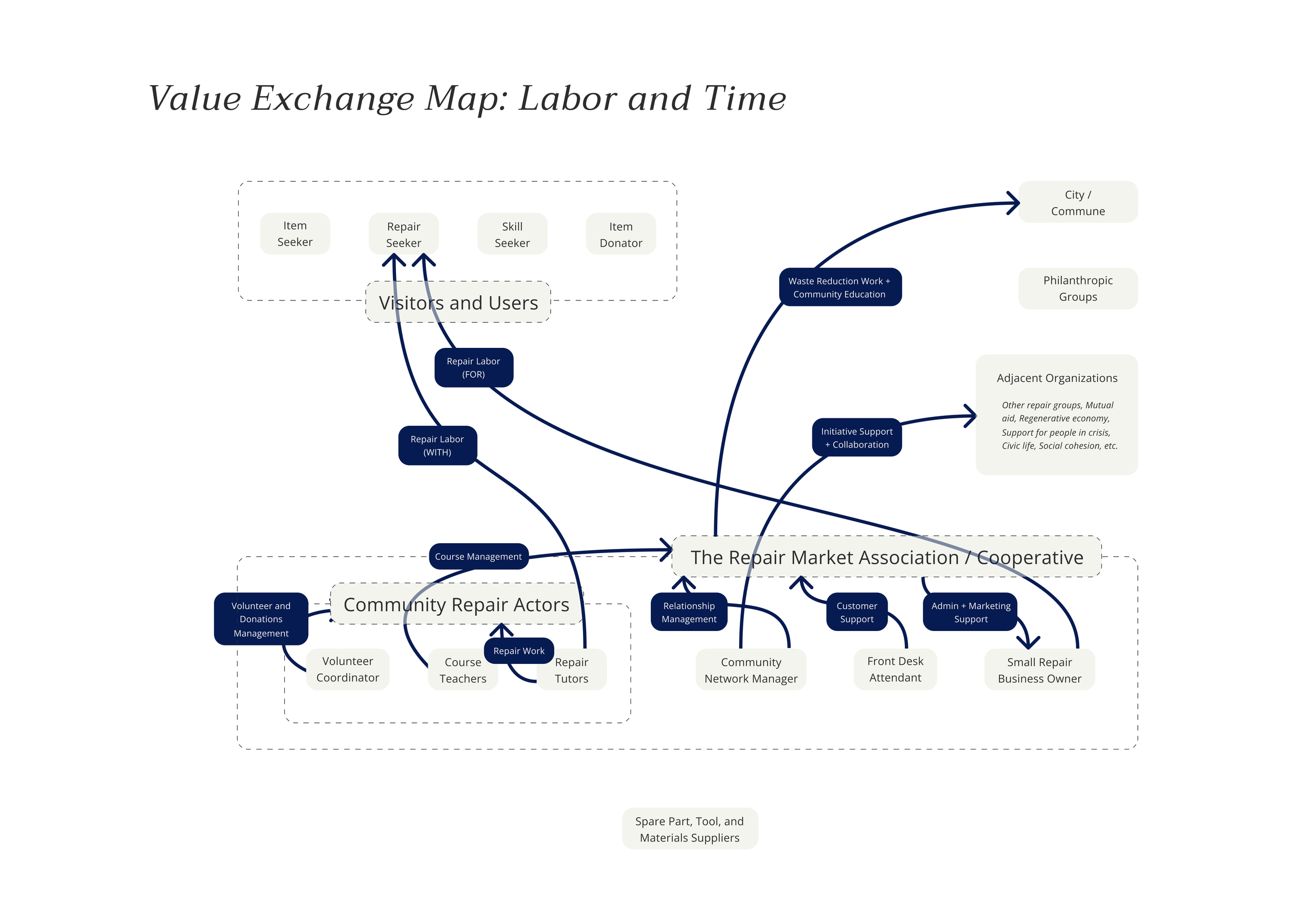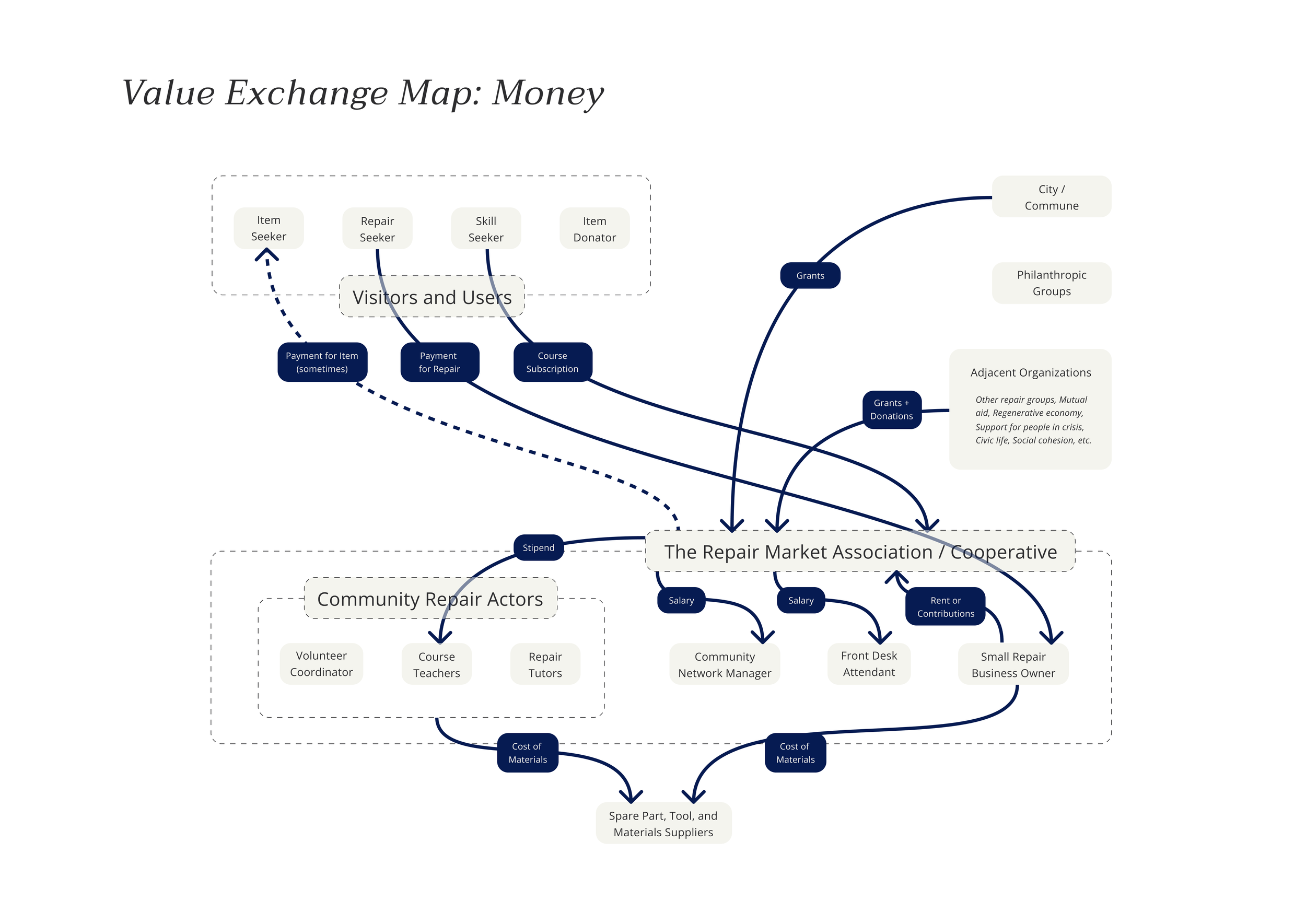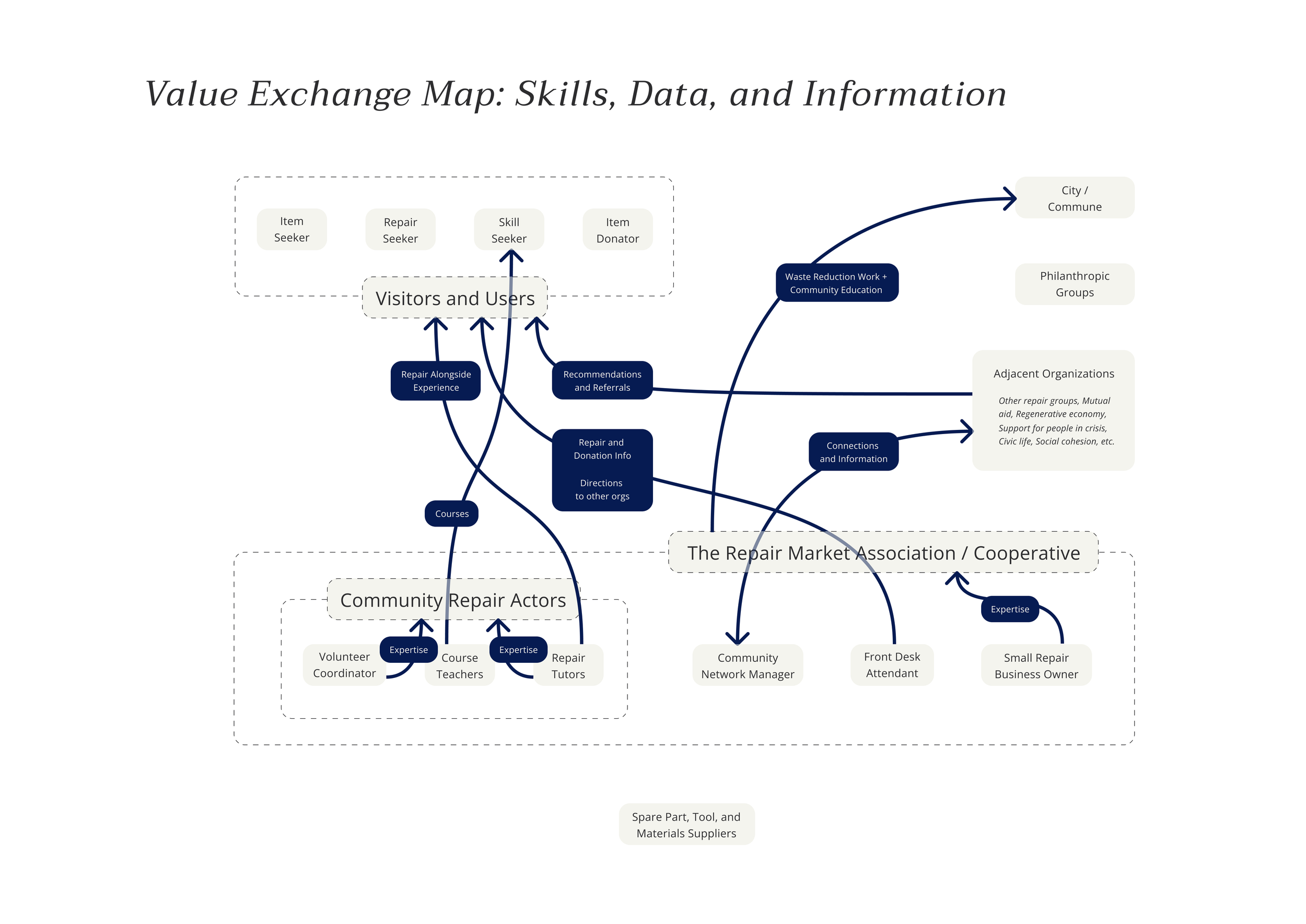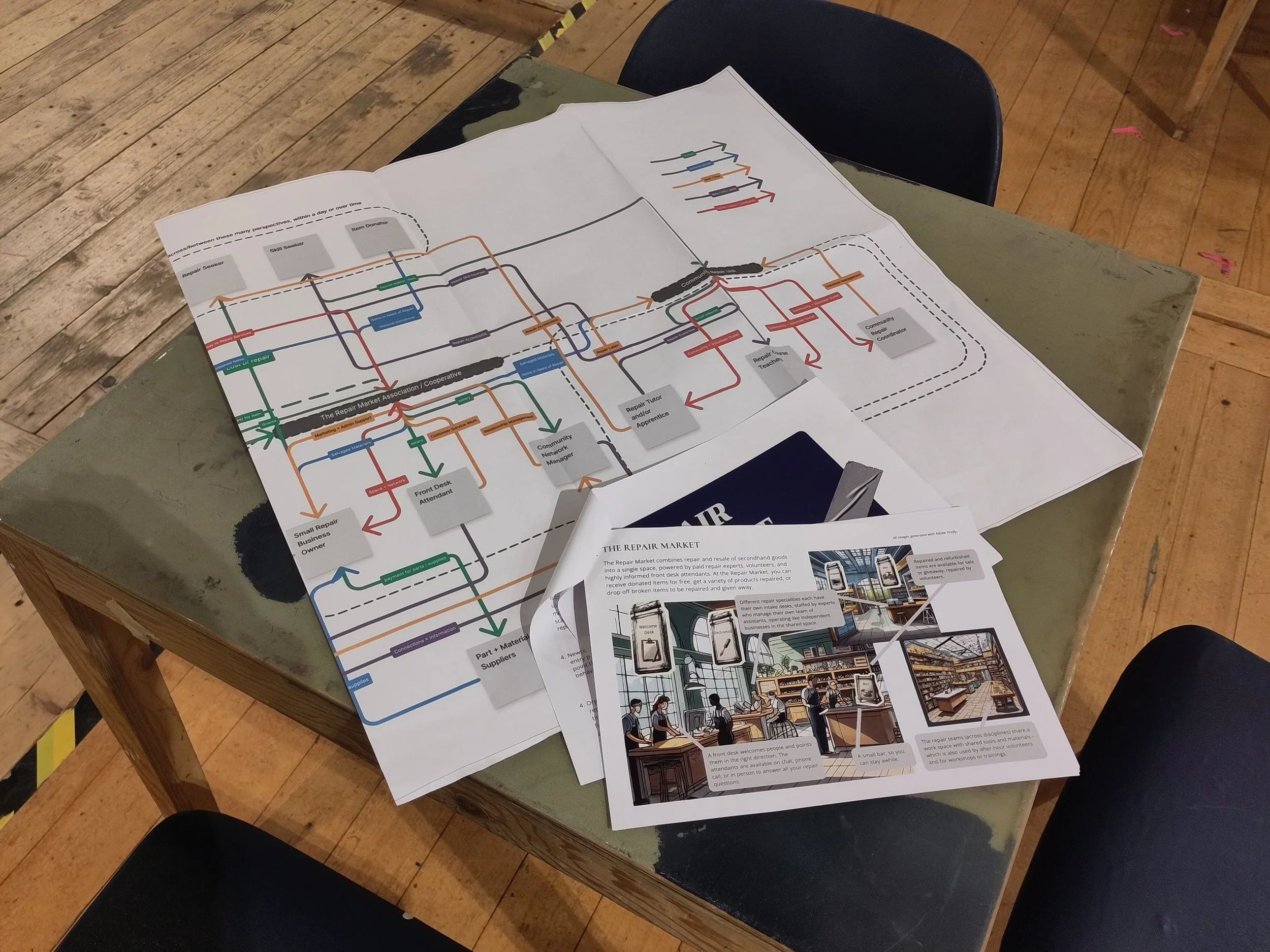The Repair Market
My graduate research thesis for the Laurea Magistrale in Product Service-System Design at the Politecnico di Milano:
The Repair Market: Unifying repair expertises and approaches into a space that engages regenerative behaviors
Advisor: Stefana Broadbent
December 19, 2023
Politecnico di Milano
2023
The Repair Market: Unifying repair expertises and approaches into a space that engages regenerative behaviors
Abstract
As an investigation of repair grounded in fieldwork, this thesis examines repair not just as a service but as an approach and ethos that stretches into behaviors, relationships, and policy. Ethnographic and case study interviews with non-commodified community repair groups in Milano are synthesized against contextual research about global repair cultures, repair behaviors, and the growing community repair movement. Research findings were used to develop a co-design workshop centered on “retelling” disposal stories into repair stories and imagining new repair experiences. The insights and imperatives from the research activities were woven into a concept that was further developed with members of Milano’s repair network. The final proposal is a service that combines small business and community repair into a single market-like space and supports new touchpoints that engage people throughout their repair journey. The proposal advances the mindset-shifting successes of community repair while opening new doorways to participants and creating fluid pathways to repair at scale, skill-building, and local regeneration.
Keywords
Repair; regeneration; regenerative economy; just transition; design for communities; care; healing; hobby; craft; restoration; survival; environmentalism; anticapitalism; social justice; non-commodified services; networks; organization design; co-design; ethnographic field research; circular economy; right to repair;
Watch the final presentation recording.
Reach out to request access to the complete PDF. PDF includes: extensive description of all research activities, case studies, and additional concept materials.
Skills and methods included:
research project planning and scoping
literature review (extensive)
expert interviews
ethnographic studies, including volunteering with groups
case study development
co-design workshop
research synthesis leading to frameworks, insights, imperatives, and interventions
service concept development with feedback
storyboarding (with AI images)
creating service design frameworks: user roles, service offering map, organizational chart, storyboards, value exchange maps
page layout and design of book
Delivered:
200+ page PDF document and printed book
Key research findings and frameworks from literature, case studies, co-design, and field observations and interviews
Final service concept with key frameworks: user roles and activities, service offering map, organizational chart, storyboards, value exchange maps
Final presentation and Q&A
I adore the worlds of repair, craft, care, and maintenance. I’m especially interested in academic opportunities, freelancing work, or full-time roles that incorporate these values.
Are you also interested in these topics? Please reach out to connect and chat!
Repair Behaviors
From the several research methods, four motivations for engaging in repair emerged. To be clear, these behaviors motivate behavior across many different kinds of repair services, not just non-commodified repair events. Often, these motivations are not pure (as in, people engage in repair for a variety of reasons) or able to be boiled down to a single source, but instead a rich web that reflects human complexity.
The introductory paragraph for each repair behaviors is included here. The complete paper includes examples, case studies, and images for each behavior.
-
Think of this as: “I repair because I need to for my material well-being.”
Repair for survival, or basic material well-being, can be traced to the earliest forms of repair, before industrialized extraction. Then, repair and maintenance were standard practice to ensure that material goods lasted as long as possible. Now, repair exists as a coping mechanism to maintain basic living standards in the face of colonization, poverty, wealth inequality, or other forms of localized material scarcity such as conflict or embargo. This can work on a social level, where society struggles with material scarcity, and therefore a culture of repair thrives. It can also work on a personal level, where individuals are using repair and maintenance to get by in unequal settings.
-
Think of this as: “I repair because it makes me feel accomplished and fulfilled.”
In some contexts, repair is seen as a creative activity, often engaging technical skills that are cultivated as hobbies. This aspect of repair, especially repair at home or in volunteer contexts, is largely seen as having extended from the maker, DIY, and hackerspace movements (Nova and Bloch, 2020). While this repair behavior may happen in community settings, it is more internally focused on skill-building, a sense of project “completion,” or being able to accomplish a technical task yourself.
-
Think of this as: “I repair because it is a way of living my beliefs.”
As repair became less necessary due to the glut of materials in industrialized contexts, it transformed into an act of praxis, specifically in the Global North. As an act of resistance, it pushes back against the idea of planned obsolescence, a concept popularized by Vance Packard in his 1960 book The Waste Makers that critiques the intentional design and manufacture of products (and by now, software) to last a limited time to encourage new consumption. Engaging in repair can be considered both anticapitalist, as it resists the constant consumption that capitalism requires, and environmentalist, as it preserves existing materials and products to reduce carbon footprints.
-
Think of this as: “I support the relationships, people, + lives around me, therefore I repair.”
An often unacknowledged aspect of repair is maintenance and the ongoing labor it takes to lengthen the lifespan of products and materials. This can be extended beyond materials to relationships, communities, and well-being too - and can be seen as a sort of philosophical extension of the other forms of repair discussed earlier (reparations, etc). The act of a technical repair doesn’t happen in a vacuum; when it occurs in social settings, it can be seen as bringing people together.
Key Research Frameworks:
research themes, key texts, field observations, co-design boundary objects, co-design workshop outcomes
Final Insights + Imperatives
-
From the literature review and contextual research, it is clear how repair cultures, and therefore the expertise and ability that comes with it, are unevenly distributed across the globe. Histories of colonization, extraction, and conflict have shaped who knows how to repair what today, and with what resources. These divisions remain in other cities, where repair services are sometimes concentrated in immigrant neighborhoods (Nova and Bloch, 2020).
This same thread continued into gender and age, where different generations have retained different kinds of repair skills, and different domains of craft and repair are socialized to different genders. Elderly people at repair spaces mend bikes and furniture; young people fix digital devices. Women work with textiles and soft goods; men are focused on electronics and bikes. These phenomena were observed both in academic studies of repair spaces and field research. Schägg et al. note as an imperative in their study of Berlin repair cafes creating a role within repair spaces responsible for “advocating for women, minorities, and lower social classes” (2022).
The insight showed up again in the co-design sessions, where people from different countries exhibited different propensities for the repair of basic goods (not including expensive devices like computers or mobile phones) and told stories of either learning or not learning repair skills from early generations.
Imperatives:
To continue cultivating repair culture and community repair spaces in a city like Milano, we can…
Create repair spaces that are diverse in terms of demographics and expertise
Create supportive learning environments to continue passing along repair skills
-
Both anecdotal observations in field research and academic studies showed the success of the “repair alongside” model that is promoted by community repair groups. This focus on the mindset shift is what drives them, rather than reaching grand scale or fame. As Moalem and Mosgaard point out, scale is antithetical to the mission of community repair as it would dilute their ability to engage socially with people (2021).
However, scale is needed to engage repair behaviors at the level needed for a green transition in a city like Milano. Community repair, though very well networked amongst itself, is not networking with expertise outside the volunteer community that could engage people in ongoing repair after the mindset shift. While this is a specific phenomenon of the Milano network, many academic papers and repair proponents discuss the adjacent need for small business and independent repair as part of the movement against disposability (Bradley and Persson, 2022; Nova and Bloch, 2020).
This same challenge was observed in the concepts from the co-design session and feedback throughout the initial concept phase. There are concerns about volunteer networks being stretched too thin - yet people are very interested in them as their first step into the world of repair.
Imperatives:
Imperatives. To continue cultivating repair culture and community repair spaces in a city like Milano, we can…
Continue encouraging social connections
Network repair beyond volunteer-run organizations
-
A fascinating outcome of the co-design session was the presence of a “friend” character and the importance of a social relationship for passing along repair skills and knowledge. This phenomenon demonstrates the power of word-of-mouth and “reference” relationships; meaning, having a person you can go to who will listen to your situation and point you in the right direction. A parallel version of the “friend” phenomenon is observed in stories of volunteers who are pulled into repair work through social connections.
Clearer entry points would also clarify the functioning of community repair spaces to newcomers and could assist in developing relationships across a wider and more diverse network. The successful entry points seen in research also meet people in their repair behaviors and needs - which we have seen are quite varied.
Imperatives:
To continue cultivating repair culture and community repair spaces in a city like Milano, we can…
Create several entry touchpoints with varying levels of commitment
-
Consistently across case studies and interviews, the key role of volunteers and the workload of relationship-building was clear. Volunteer needs need to be met just as much as visitor needs, as their labor is crucial in the value exchange that enables the community repair system. The relationship-building aspect helps hold the network together; as we have seen, the network is a strong aspect of the community scene that enables its work.
Case studies of organizations who found success with volunteer management created defined systems and clear commitments, and have a specific focus in their work that helps them attract volunteers. Also, Schägg et al.’s report on repair cafes calls for the creation of roles outside of strictly tutor and organizer, such as roles involved with teaching or networking (2022).
Imperatives:
To continue cultivating repair culture and community repair spaces in a city like Milano, we can…
Professionalize + valorize networking labor
Create clear communication and organizational streams for specific types of repair work
Service Concept Proposal
The Repair Market combines small business and community repair into a space that tackles various repair disciplines with expert-staffed stalls, repair-with tutoring hours, and courses. The space is managed by an association staffed by community network managers and front-desk attendants who are available to answer regenerative behavior questions and point people in the right direction.
The Repair Market reaches people across needs and repair inclinations by including several entryways into repair, and supporting donation, repair, and dispersal (both commodifed and free) of secondhand items.
The Repair Market looks similar to a market space, with defined spaces for small businesses and defined internal work areas. However, it also includes a cafe so you can sit and stay awhile and the front desk where you can get your repair and reuse questions answered.
In the evenings, the open spaces and work areas in the Repair Market transform into tutoring hours and repair courses. Along the walls, secondhand and donated materials are available for pick up or sale.
The Repair Market is where you go…
...with your worn-out jacket, broken toaster, and bike in need of a tune-up - drop off at the tailor, learn from the volunteer electrician tutor, then take a bike class taught by and for women.
...to pick up a free refurbished tablet for your child - and get directions to the next free repair event so you can get your vacuum cleaner tuned up too.
...to share your love of sewing - learning from people across generations and cultures as you patch up garments that will be given away or sold to sustain volunteer activities.
...when you are moving, to drop off leftover nails, wires, and paint - since the front-desk person told you it would get reused here instead of sent to the landfill.
...or to grab a coffee and soak up the atmosphere.

The Repair Market enables a wide variety of regenerative behaviors through a social space that allows you to move fluidly between services, roles, and activities.
Ch 8:
Conclusion
The research for this thesis began with developing a deeper understanding of what it means to repair and taking that lens to fieldwork with community repair organizations in Milano. The research insights highlighted the fragmented nature of repair expertise, the mindset-shifting success of community repair yet its struggles with scale, how people enter the world of repair, and the challenges of relationship-building (for more discussion, see Chapter 7). The imperatives from the insights were used to create interventions that build upon the existing community repair network in Milano and propose a new service and space: The Repair Market.
The investigation overall shows us how repair cannot fix everything, but it has an important role to play in the transition to a regenerative future. Both the physical impact of a repair and the transformative act of doing so are immensely powerful when examined hyper-locally and with a focus on changed behaviors and mindsets. This understanding, of the necessity to repair and cycle materials locally, almost contradictorally comes from a broader perspective on the global flow of new and used goods and the neocolonial damage wrought by consumerism.
Even as repair is re-mainstreamed in the Global North (because it has truly existed for centuries!) through community initiatives, new policies, and educational interventions, it feels crucial to recognize where repair comes from: it is survival work. It is somehow everyday and radical, simultaneously. Appropriating this meaning for capitalistic or Western “innovation” ends, as Badami warns, or failing to recognize what is already working and uplifting “traditional, indigenous, and local knowledge and practices,” as the Design Justice Principles call on us to do, dilutes the original meanings of repair (2018; Design Justice Network, 2018).
As advocacy for repair continues in the Global North, seeing it along the physical, emotional, relational, and political scales outlined in Chapter 2 continues pointing us towards a reparative, restorative future where our acts of technical repair exist alongside many other regenerative behaviors that contribute to strong relationships, justice and equity, and healing environments.

